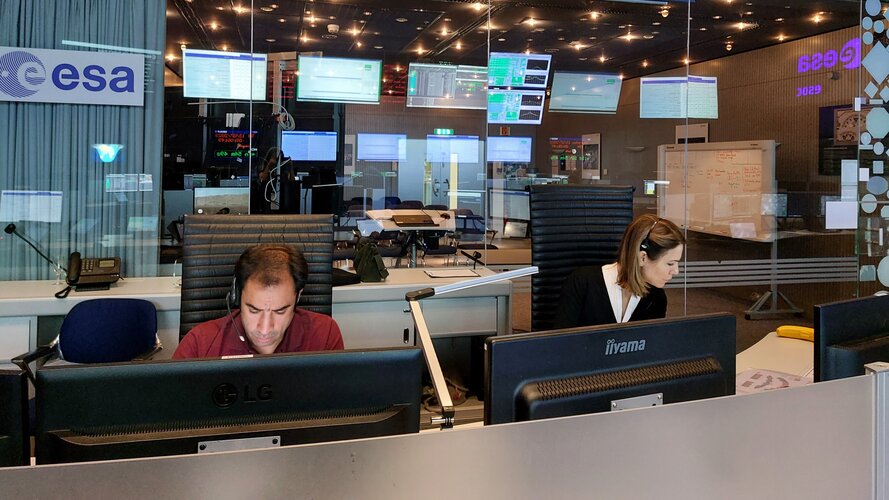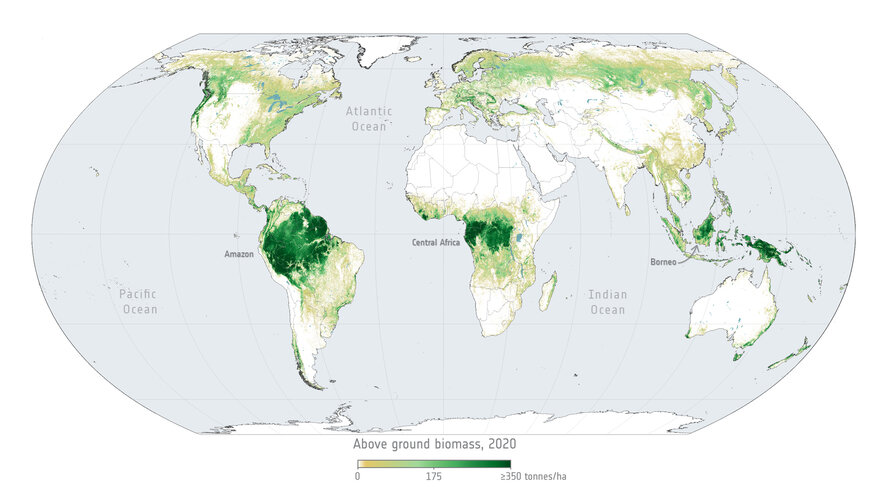ESA Observing the Earth 
zdroje zpráv:
Earth from Space: Southern Patagonian Ice Field
29.9.2023 10:00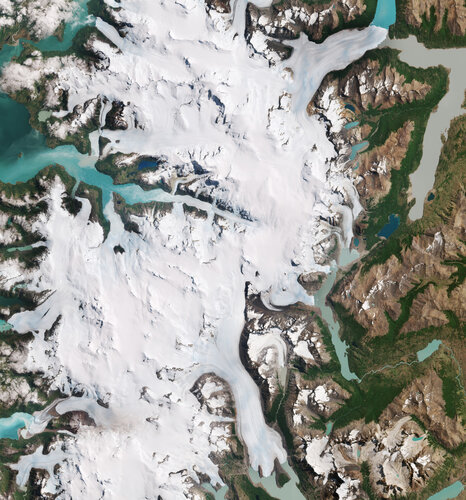 Image:
Part of the Southern Patagonian Ice Field with its white glaciers and aquamarine lakes is featured in this Copernicus Sentinel-2 image from 10 January 2023.
Image:
Part of the Southern Patagonian Ice Field with its white glaciers and aquamarine lakes is featured in this Copernicus Sentinel-2 image from 10 January 2023.
Earth from Space: Scorched Rhodes
22.9.2023 10:00 Image:
This summer, Europe experienced a relentless heatwave, fuelling wildfires in several countries. This Copernicus Sentinel-1 image shows the burn scars left by fires on the Greek island of Rhodes.
Image:
This summer, Europe experienced a relentless heatwave, fuelling wildfires in several countries. This Copernicus Sentinel-1 image shows the burn scars left by fires on the Greek island of Rhodes.
Trio of Sentinel satellites map methane super-emitters
20.9.2023 9:00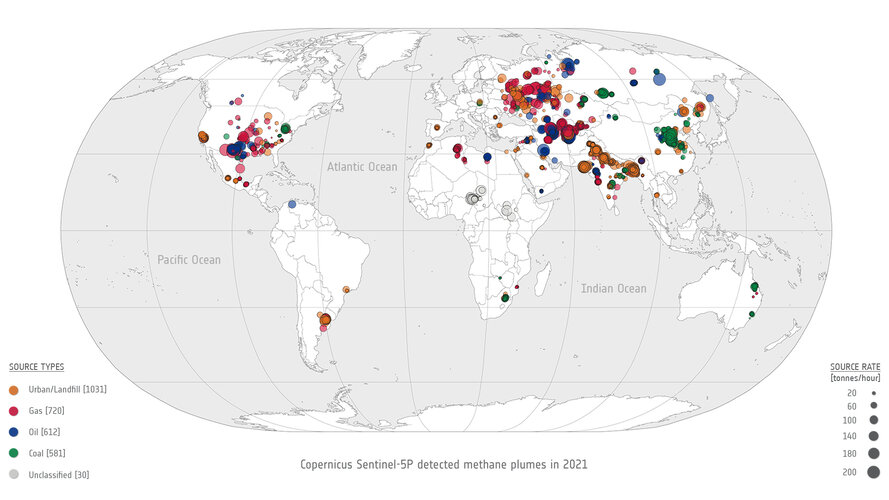
In the quest to address climate change and reduce greenhouse gas emissions, detecting methane leaks – a potent contributor to global warming – has become increasingly vital. Researchers are harnessing the capabilities of cutting-edge satellite technology to monitor these leaks from space.
Earth from Space: Blooms in the Gulf of Finland
15.9.2023 10:00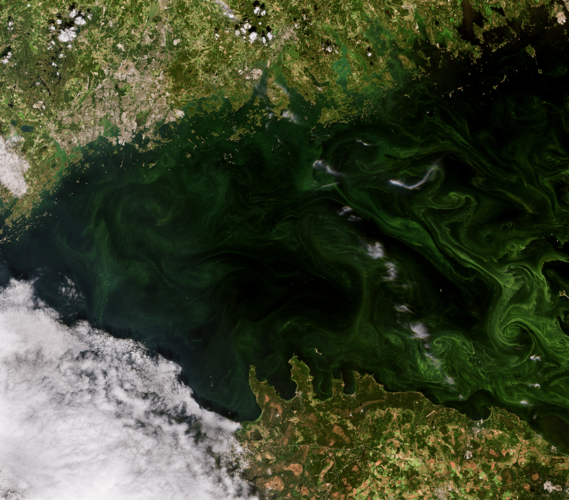 Image:
This Copernicus Sentinel-2 image features swirls of vivid, emerald green algal blooms in the Gulf of Finland.
Image:
This Copernicus Sentinel-2 image features swirls of vivid, emerald green algal blooms in the Gulf of Finland.
Sentinel-1 reveals shifts from Morocco earthquake
14.9.2023 13:34
Following the devastating earthquake that struck Morocco on 8 September, satellite data have been made available through the International Charter ‘Space and Major Disasters’ to help emergency response teams on the ground.
In addition, radar measurements from Europe’s Copernicus Sentinel-1 satellite mission are being used to analyse how the ground has shifted as a result of the quake, which will not only help in planning the eventual reconstruction but will also further scientific research.
Showcase your climate data visualisation talent
13.9.2023 11:00
Are you a creative visionary with a passion for climate action? Enter ESA’s latest competition to showcase your talent by transforming decades of satellite climate data into impactful visuals to help bridge the gap between climate science, policy makers and the wider public. The winner will have the unique opportunity to display their data visualisation at the 2023 United Nations Climate Change Conference (COP28) taking place later this year.
Meteosat Third Generation: painting the full picture
11.9.2023 13:00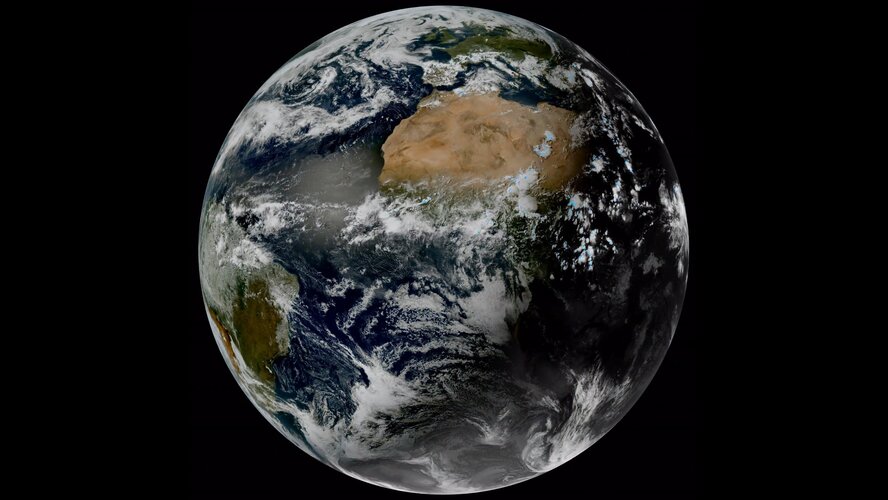 Video:
00:00:14
Video:
00:00:14
In a significant leap forward for meteorology, the preliminary data obtained by Meteosat Third Generation’s two instruments, the Flexible Combined Imager (FCI) and the Lightning Imager (LI), were successfully combined today for the first time – highlighting their complementary capabilities. This first set of animations gives us a preview of the system’s future impact.
This animation shows the combined observations from the Meteosat Third Generation’s instruments starting at 12:00 UTC on 03 June 2023 and ending at 12:00 UTC of 04 June 2023. Lightning activity is more intense over central Africa, the northern part of South America, Europe and the Middle East.
Cloud and lightning movements are synchronised, following the global circulation patterns (east to west along the Equator, and west to east at higher latitudes). The bright sunglint area, where the Sun's light is reflected by the ocean and small water bodies towards the satellite, traverses from east to west throughout the day.
This is preliminary commissioning data, not for operational use. For more information: A forecasting revolution on its way
Sensing city night heat from space
24.8.2023 16:25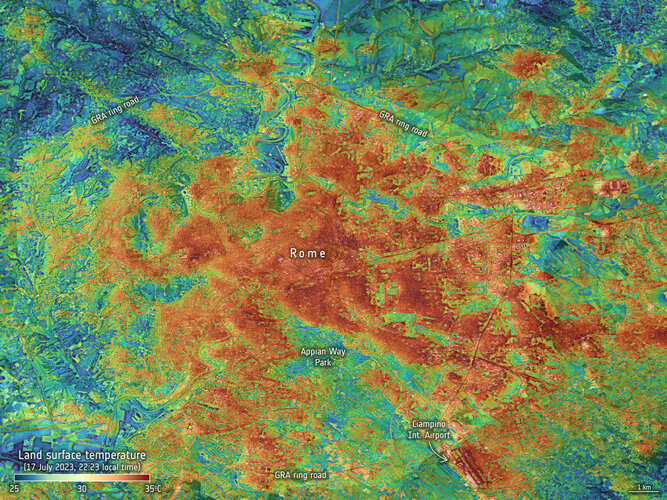
Confirmed by the World Meteorological Organization, July 2023 was the hottest month on record, with high-impact weather continuing through August. These records are based on air temperatures, but measurements of the temperature of Earth’s surface taken from space are also essential to tracking the impact of climate change, and to being better prepared for such extremes – especially when it comes to cities where stifling urban heat islands form.
Wildfires continue to rage in Greece
24.8.2023 15:07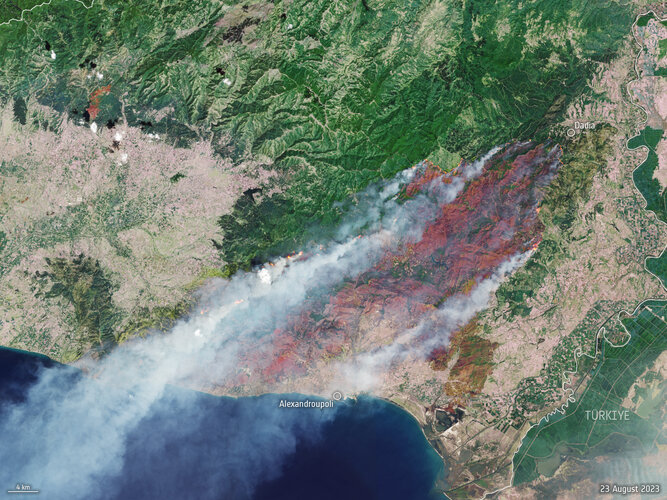 Image:
A month after fires ravaged the island of Rhodes in July 2023, more fires have ripped through Greece this week as southern Europe swelters under a late summer heatwave. This Copernicus Sentinel-2 image shows the ongoing blaze near Alexandroupoli in the Evros region of northeast Greece – close to the Türkiye border.
Image:
A month after fires ravaged the island of Rhodes in July 2023, more fires have ripped through Greece this week as southern Europe swelters under a late summer heatwave. This Copernicus Sentinel-2 image shows the ongoing blaze near Alexandroupoli in the Evros region of northeast Greece – close to the Türkiye border.
Putting the S in the first Meteosat Third Generation Sounder
14.8.2023 15:10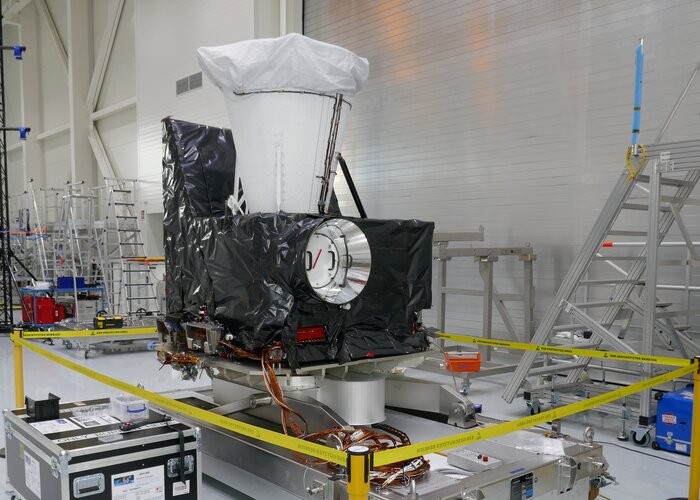
Following on from the launch of the first Meteosat Third Generation weather satellite, MTG-I1, last December, the focus is now on getting its partner satellite, MTG-S1, ready for liftoff next year – and a significant milestone has been reached. The satellite has been equipped with its main instrument, the Infrared Sounder, hence the satellite’s name, and also the Copernicus Sentinel-4 instrument, an ultraviolet, visible, near-infrared light spectrometer, or UVN for short.
Portugal blaze
8.8.2023 16:10 Image:
With Portugal in the grip of a heatwave, a wildfire broke out on 5 August south of Odemira in the Alentejo region in southern Portugal. This image, captured by the Copernicus Sentinel-2 satellite mission, shows the fire on 7 August.
Image:
With Portugal in the grip of a heatwave, a wildfire broke out on 5 August south of Odemira in the Alentejo region in southern Portugal. This image, captured by the Copernicus Sentinel-2 satellite mission, shows the fire on 7 August.
Antarctica vulnerable to extreme events
8.8.2023 10:51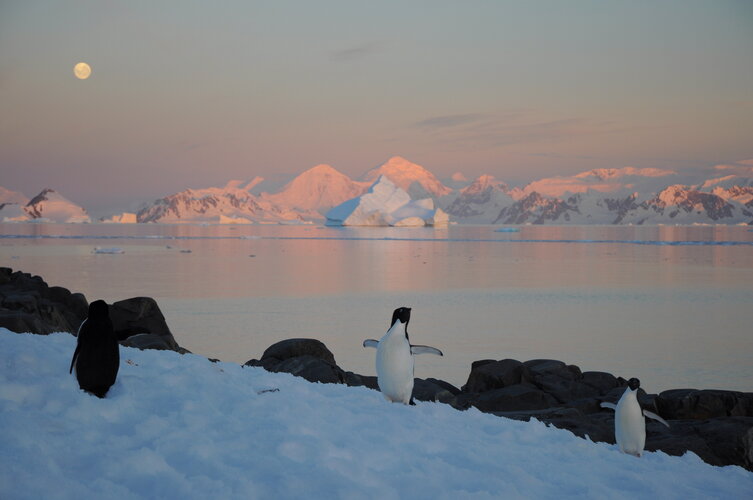
According to the World Meteorological Organization, July 2023 is likely to have been the hottest month on record. While much of Europe, North America and Asia suffered the immediate consequences of these brutal temperatures, extreme events are also hitting hard far away in the icy reaches of Antarctica. In a paper published today, scientists highlight Antarctica’s vulnerability to extremes and the role that satellites play in monitoring this remote region.
Counting wildfires across the globe
3.8.2023 13:50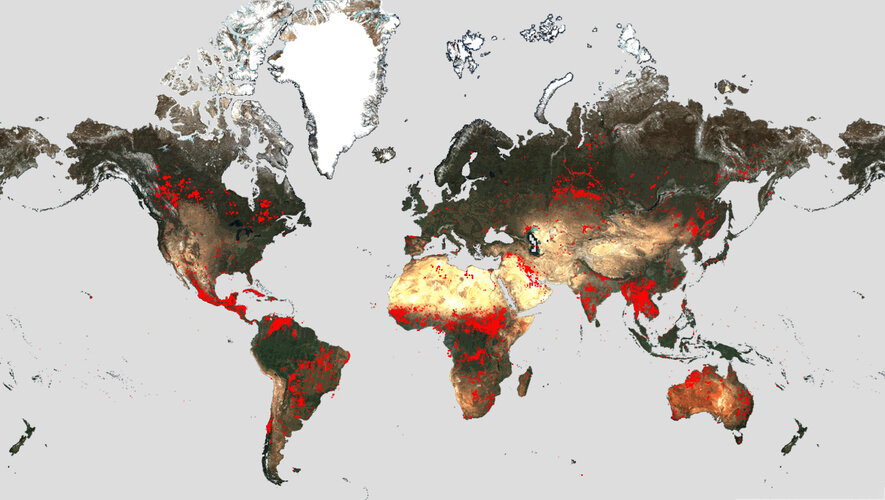
In recent weeks, devastating wildfires have spread in Greece, Italy, Spain, Portugal, Algeria, Tunisia and Canada, causing human casualties as well as massive environmental and economic damage.
While wildfires are a natural part of many ecosystems, scientists have warned that they are becoming more frequent and more widespread. In response, an upgraded version of ESA’s World Fire Atlas is now available providing a detailed analysis of wildfires across the globe.
Simulating Aeolus’s demise: a bird’s eye view
3.8.2023 10:30 Video:
00:01:35
Video:
00:01:35
Aeolus’s mission is over, but weather forecasting is improved forever, and a new precedent has been set for safe satellite reentries. The trailblazing Earth Explorer returned through our atmosphere on 28 July, following the path it was guided on by ESA’s mission control over Earth’s most uninhabited regions, finally disintegrating over the Antarctic.
A week-long series of manoeuvres led to this point. They had never been performed before and pushed the satellite to its limits. Aeolus was never designed to fly at such low altitudes – its thrusters and fuel reserves were not made to operate in the thick lower reaches of Earth’s atmosphere.
Despite choppy skies and one evening where it seemed the attempt could fail, the successful reentry lowered the already small risk of surviving fragments landing where they shouldn’t.
The chance of satellite debris falling on your head is three times less than a meteorite doing the same. Despite this, as our orbital highways get busier and reentries become more common, ESA went above and beyond to lower this even further.
By turning Aeolus’s original fate – an uncontrolled, ‘natural’ reentry – into an assisted one, they reduced that risk another 42 times.
This animation shows how the final moments for Aeolus could have gone, set to a sonification of Aeolus data, composed by Jamie Perera.
Find out more about Aeolus’s final moments in the Rocket Science blog.
This simulation is created using a model of the Aeolus spacecraft, considering its shape, size, mass and materials, and the effect of 'aerothermodynamics' - the study of how high-velocity gases behave, including thermal effects between gases and solid surfaces.
The tool used, SCARAB, creates a simulation of Aeolus's reentry with ‘six degrees of freedom’, and shows the final moments of Aeolus's reentry, when the spacecraft is falling naturally in an uncontrolled descent.
Elements: FIRE
31.7.2023 15:00 Video:
00:33:08
Video:
00:33:08
English:
The summer fire season is well under way in Europe – countries all around the Mediterranean are experiencing record temperatures coupled with huge wildfires that have led to mass evacuations. In this enthralling new ESA documentary, explore how people on the frontline are using space to better monitor and fight the flames.
Follow the incredible stories of the firefighters who dealt with unprecedented fires in Gironde, France, and the forest officers using satellite data to plan for the forests’ recovery. Journey into the heart of Earth's elemental might and discover how space is changing the game for monitoring volcanic eruptions too – including one of the world’s most studied volcano, Mount Etna.
FIRE is the first episode of ESA’s new series centred around the elements and showcases how Earth observation has become crucial to those fighting climate change on the ground.
French:
La saison estivale des feux de forêts bat son plein en Europe – mais comment l’espace peut-il aider ceux qui combattent les flammes? Dans ce nouveau documentaire « FIRE » en version française, suivez les pompiers de Gironde qui ont fait face l’été dernier à des incendies sans précédent. Inspectez les arbres encore vivants dans les Landes et détectez avec les experts de l’Office National des Forêts les invasions de scolytes, petits insectes qui s’attaquent aux arbres vulnérables. Enfin, découvrez comment les satellites ont changé la donne pour observer l’activité des volcans – on vous emmène sur l’Etna !
FIRE est le premier épisode d’une nouvelle série de films de l'ESA centrée sur les éléments. La série explore la façon dont l'observation de la Terre par satellite est devenue cruciale pour tous ceux qui sont en première ligne pour gérer les crises liées au changement climatique.
German:
In diesem Sommer kam es in Ländern rund um das Mittelmeer zu Rekordtemperaturen und großen Waldbränden, die zu Massenevakuierungen führten. In dieser spannenden neuen ESA-Dokumentation erfahren Sie, wie Menschen an vorderster Front den Weltraum nutzen, um die Brände besser zu überwachen und zu bekämpfen. Verfolgen Sie die unglaublichen Geschichten der Feuerwehrleute, die letztes Jahr mit beispiellosen Bränden in der Gironde (Frankreich) zu kämpfen hatten, und der Forstbeamten, die Satellitendaten nutzten, um die Erholung der Wälder zu planen. Reisen Sie in das Herz der elementaren Macht der Erde und entdecken Sie, wie der Weltraum auch die Überwachung von Vulkanausbrüchen verändert – darunter der am besten untersuchte Vulkan der Welt, der Ätna. FEUER ist die erste Folge der neuen ESA-Serie rund um die Elemente und zeigt, wie wichtig die Erdbeobachtung aus dem All für diejenigen geworden ist, die den Klimawandel vor Ort bekämpfen.
Spanish:
En este nuevo y apasionante documental de la ESA, explora cómo las personas utilizan el espacio para monitorear y combatir mejor las llamas en primera línea. Sigue las increíbles historias de los bomberos que se ocuparon de incendios sin precedentes en Gironda, Francia, y de los agentes forestales que utilizaron datos satelitales para planificar la recuperación de los bosques. Viaja al corazón de la Tierra y descubre cómo el espacio también está cambiando las reglas del juego para monitorear las erupciones volcánicas, incluidas las de uno de los volcanes más estudiados del mundo, el Monte Etna. FIRE es el primer episodio de la nueva serie de la ESA centrada en los elementos que muestra cómo la observación de la Tierra se ha vuelto crucial para quienes luchan contra el cambio climático sobre el terreno.
Elements: FIRE
31.7.2023 15:00 Video:
00:33:08
Video:
00:33:08
English:
The summer fire season is well under way in Europe – countries all around the Mediterranean are experiencing record temperatures coupled with huge wildfires that have led to mass evacuations. In this enthralling new ESA documentary, explore how people on the frontline are using space to better monitor and fight the flames.
Follow the incredible stories of the firefighters who dealt with unprecedented fires in Gironde, France, and the forest officers using satellite data to plan for the forests’ recovery. Journey into the heart of Earth's elemental might and discover how space is changing the game for monitoring volcanic eruptions too – including one of the world’s most studied volcano, Mount Etna.
FIRE is the first episode of ESA’s new series centred around the elements and showcases how Earth observation has become crucial to those fighting climate change on the ground.
French:
La saison estivale des feux de forêts bat son plein en Europe – mais comment l’espace peut-il aider ceux qui combattent les flammes? Dans ce nouveau documentaire « FIRE » en version française, suivez les pompiers de Gironde qui ont fait face l’été dernier à des incendies sans précédent. Inspectez les arbres encore vivants dans les Landes et détectez avec les experts de l’Office National des Forêts les invasions de scolytes, petits insectes qui s’attaquent aux arbres vulnérables. Enfin, découvrez comment les satellites ont changé la donne pour observer l’activité des volcans – on vous emmène sur l’Etna !
FIRE est le premier épisode d’une nouvelle série de films de l'ESA centrée sur les éléments. La série explore la façon dont l'observation de la Terre par satellite est devenue cruciale pour tous ceux qui sont en première ligne pour gérer les crises liées au changement climatique.
German:
In diesem Sommer kam es in Ländern rund um das Mittelmeer zu Rekordtemperaturen und großen Waldbränden, die zu Massenevakuierungen führten. In dieser spannenden neuen ESA-Dokumentation erfahren Sie, wie Menschen an vorderster Front den Weltraum nutzen, um die Brände besser zu überwachen und zu bekämpfen. Verfolgen Sie die unglaublichen Geschichten der Feuerwehrleute, die letztes Jahr mit beispiellosen Bränden in der Gironde (Frankreich) zu kämpfen hatten, und der Forstbeamten, die Satellitendaten nutzten, um die Erholung der Wälder zu planen. Reisen Sie in das Herz der elementaren Macht der Erde und entdecken Sie, wie der Weltraum auch die Überwachung von Vulkanausbrüchen verändert – darunter der am besten untersuchte Vulkan der Welt, der Ätna. FEUER ist die erste Folge der neuen ESA-Serie rund um die Elemente und zeigt, wie wichtig die Erdbeobachtung aus dem All für diejenigen geworden ist, die den Klimawandel vor Ort bekämpfen.
Spanish:
En este nuevo y apasionante documental de la ESA, explora cómo las personas utilizan el espacio para monitorear y combatir mejor las llamas en primera línea. Sigue las increíbles historias de los bomberos que se ocuparon de incendios sin precedentes en Gironda, Francia, y de los agentes forestales que utilizaron datos satelitales para planificar la recuperación de los bosques. Viaja al corazón de la Tierra y descubre cómo el espacio también está cambiando las reglas del juego para monitorear las erupciones volcánicas, incluidas las de uno de los volcanes más estudiados del mundo, el Monte Etna. FIRE es el primer episodio de la nueva serie de la ESA centrada en los elementos que muestra cómo la observación de la Tierra se ha vuelto crucial para quienes luchan contra el cambio climático sobre el terreno.
Italian:
In questo nuovo avvincente documentario dell'ESA, esplora come le persone in prima linea utilizzano lo spazio per monitorare e combattere meglio le fiamme. Segui le incredibili storie dei vigili del fuoco che hanno affrontato incendi senza precedenti nella Gironda, in Francia, e delle guardie forestali che utilizzano i dati satellitari per pianificare il recupero delle foreste. Viaggia nel cuore della forza primordiale della Terra e scopri come lo spazio sta avendo un impatto anche nel monitoraggio delle eruzioni vulcaniche, incluso uno dei vulcani più studiati al mondo, l'Etna. FIRE è il primo episodio della nuova serie dell’ESA incentrata sugli elementi e mostra come l’osservazione della Terra sia diventata cruciale per coloro che combattono i cambiamenti climatici sul campo.
Elements: FIRE
31.7.2023 15:00 Video:
00:33:08
Video:
00:33:08
The summer fire season is well under way in Europe – countries all around the Mediterranean are experiencing record temperatures coupled with huge wildfires that have led to mass evacuations. In this enthralling new ESA documentary, explore how people on the frontline are using space to better monitor and fight the flames.
Follow the incredible stories of the firefighters who dealt with unprecedented fires in Gironde, France, and the forest officers using satellite data to plan for the forests’ recovery. Journey into the heart of Earth's elemental might and discover how space is changing the game for monitoring volcanic eruptions too – including one of the world’s most studied volcano, Mount Etna.
FIRE is the first episode of ESA’s new series centred around the elements and showcases how Earth observation has become crucial to those fighting climate change on the ground.
Elements: FIRE
31.7.2023 15:00 Video:
00:33:08
Video:
00:33:08
English:
The summer fire season is well under way in Europe – countries all around the Mediterranean are experiencing record temperatures coupled with huge wildfires that have led to mass evacuations. In this enthralling new ESA documentary, explore how people on the frontline are using space to better monitor and fight the flames.
Follow the incredible stories of the firefighters who dealt with unprecedented fires in Gironde, France, and the forest officers using satellite data to plan for the forests’ recovery. Journey into the heart of Earth's elemental might and discover how space is changing the game for monitoring volcanic eruptions too – including one of the world’s most studied volcano, Mount Etna.
FIRE is the first episode of ESA’s new series centred around the elements and showcases how Earth observation has become crucial to those fighting climate change on the ground.
French:
La saison estivale des feux de forêts bat son plein en Europe – mais comment l’espace peut-il aider ceux qui combattent les flammes? Dans ce nouveau documentaire « FIRE » en version française, suivez les pompiers de Gironde qui ont fait face l’été dernier à des incendies sans précédent. Inspectez les arbres encore vivants dans les Landes et détectez avec les experts de l’Office National des Forêts les invasions de scolytes, petits insectes qui s’attaquent aux arbres vulnérables. Enfin, découvrez comment les satellites ont changé la donne pour observer l’activité des volcans – on vous emmène sur l’Etna !
FIRE est le premier épisode d’une nouvelle série de films de l'ESA centrée sur les éléments. La série explore la façon dont l'observation de la Terre par satellite est devenue cruciale pour tous ceux qui sont en première ligne pour gérer les crises liées au changement climatique.
Elements: FIRE
31.7.2023 15:00 Video:
00:33:08
Video:
00:33:08
English:
The summer fire season is well under way in Europe – countries all around the Mediterranean are experiencing record temperatures coupled with huge wildfires that have led to mass evacuations. In this enthralling new ESA documentary, explore how people on the frontline are using space to better monitor and fight the flames.
Follow the incredible stories of the firefighters who dealt with unprecedented fires in Gironde, France, and the forest officers using satellite data to plan for the forests’ recovery. Journey into the heart of Earth's elemental might and discover how space is changing the game for monitoring volcanic eruptions too – including one of the world’s most studied volcano, Mount Etna.
FIRE is the first episode of ESA’s new series centred around the elements and showcases how Earth observation has become crucial to those fighting climate change on the ground.
French:
La saison estivale des feux de forêts bat son plein en Europe – mais comment l’espace peut-il venir en appui de tous ceux qui les combattent ? Dans cet extrait de notre nouveau documentaire « FIRE », suivez les pompiers de Gironde qui ont dû faire face à des incendies sans précédent l’année dernière.
FIRE est le premier épisode d’une nouvelle série de films de l'ESA centrée sur les éléments. La série explorera la façon dont l'observation de la Terre est devenue cruciale pour tous ceux qui sont en première ligne pour gérer les crises liées au changement climatique.
Une version française du film dans son entier sera disponible très bientôt.
Elements: FIRE
31.7.2023 15:00 Video:
00:33:08
Video:
00:33:08
English:
The summer fire season is well under way in Europe – countries all around the Mediterranean are experiencing record temperatures coupled with huge wildfires that have led to mass evacuations. In this enthralling new ESA documentary, explore how people on the frontline are using space to better monitor and fight the flames.
Follow the incredible stories of the firefighters who dealt with unprecedented fires in Gironde, France, and the forest officers using satellite data to plan for the forests’ recovery. Journey into the heart of Earth's elemental might and discover how space is changing the game for monitoring volcanic eruptions too – including one of the world’s most studied volcano, Mount Etna.
FIRE is the first episode of ESA’s new series centred around the elements and showcases how Earth observation has become crucial to those fighting climate change on the ground.
French:
La saison estivale des feux de forêts bat son plein en Europe – mais comment l’espace peut-il aider ceux qui combattent les flammes? Dans ce nouveau documentaire « FIRE » en version française, suivez les pompiers de Gironde qui ont fait face l’été dernier à des incendies sans précédent. Inspectez les arbres encore vivants dans les Landes et détectez avec les experts de l’Office National des Forêts les invasions de scolytes, petits insectes qui s’attaquent aux arbres vulnérables. Enfin, découvrez comment les satellites ont changé la donne pour observer l’activité des volcans – on vous emmène sur l’Etna !
FIRE est le premier épisode d’une nouvelle série de films de l'ESA centrée sur les éléments. La série explore la façon dont l'observation de la Terre par satellite est devenue cruciale pour tous ceux qui sont en première ligne pour gérer les crises liées au changement climatique.
German:
In diesem Sommer kam es in Ländern rund um das Mittelmeer zu Rekordtemperaturen und großen Waldbränden, die zu Massenevakuierungen führten. In dieser spannenden neuen ESA-Dokumentation erfahren Sie, wie Menschen an vorderster Front den Weltraum nutzen, um die Brände besser zu überwachen und zu bekämpfen. Verfolgen Sie die unglaublichen Geschichten der Feuerwehrleute, die letztes Jahr mit beispiellosen Bränden in der Gironde (Frankreich) zu kämpfen hatten, und der Forstbeamten, die Satellitendaten nutzten, um die Erholung der Wälder zu planen. Reisen Sie in das Herz der elementaren Macht der Erde und entdecken Sie, wie der Weltraum auch die Überwachung von Vulkanausbrüchen verändert – darunter der am besten untersuchte Vulkan der Welt, der Ätna. FEUER ist die erste Folge der neuen ESA-Serie rund um die Elemente und zeigt, wie wichtig die Erdbeobachtung aus dem All für diejenigen geworden ist, die den Klimawandel vor Ort bekämpfen.
Aeolus: a historic end to a trailblazing mission
29.7.2023 8:30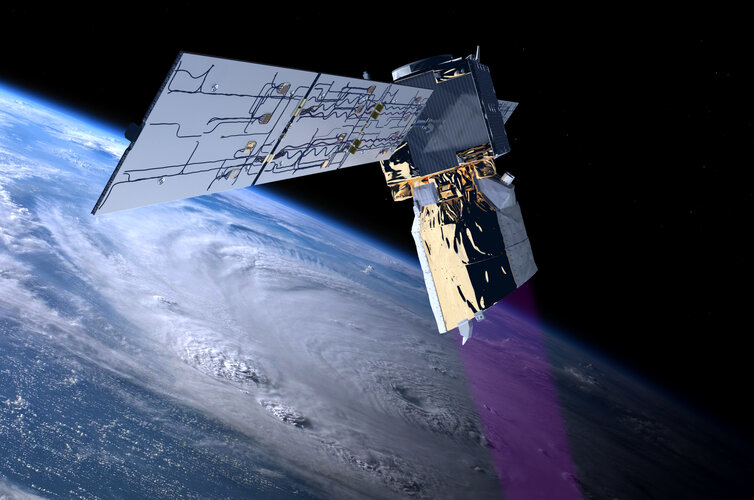
Surpassing scientific expectations and exceeding its planned life in orbit, the Aeolus wind mission has been hailed as one of ESA’s most successful Earth observation missions. And now, its end will go down in history too, thanks to the ingenuity of the Agency’s mission control team who guided this remarkable satellite down to Earth’s atmosphere for a safe reentry.
Earth from Space: Río de la Plata
28.7.2023 10:00 Image:
The Copernicus Sentinel-1 mission takes us over the Río de la Plata estuary between Argentina and Uruguay.
Image:
The Copernicus Sentinel-1 mission takes us over the Río de la Plata estuary between Argentina and Uruguay.
Historic Aeolus reentry – how it happened
27.7.2023 11:10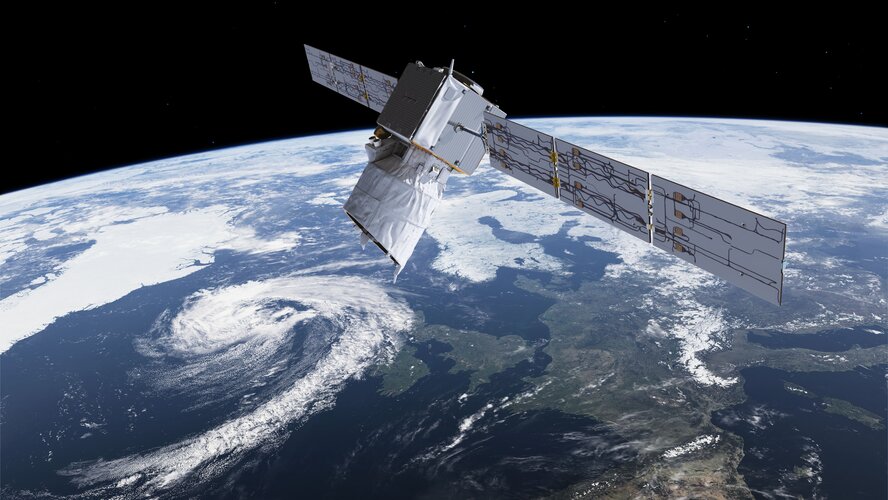
Historic Aeolus reentry – how it happened
Get rolling updates on the Aeolus reentry, on the Rocket Science blog
Aeolus reentry - LIVE
27.7.2023 11:10
Aeolus reentry - LIVE
Get rolling updates on the Aeolus reentry, on the Rocket Science blog
Aeolus reentry: the breakdown
26.7.2023 15:20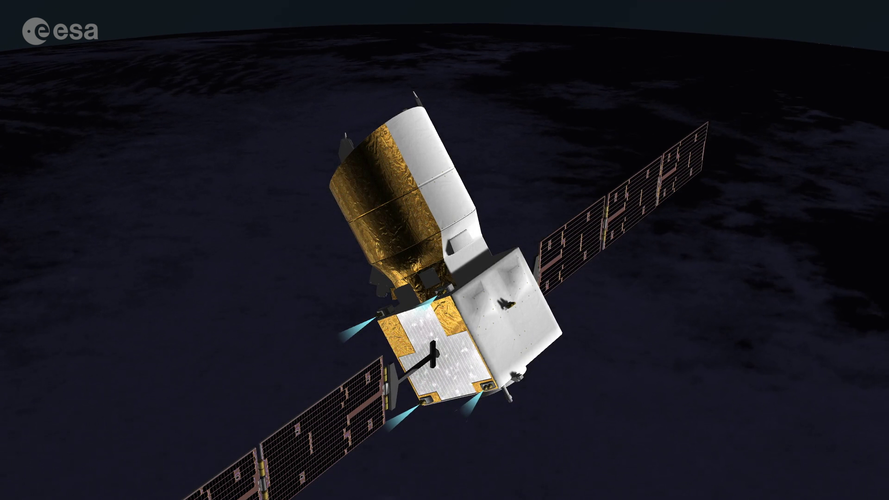 Video:
00:02:42
Video:
00:02:42
After a remarkable life in orbit, Aeolus is out of fuel and out of time – it’s returning to Earth this week. Planned and built before any regulations were put in place on ‘end-of-life’ disposal, the Earth Explorer was designed to naturally return through our atmosphere.
After months of detailed planning and analysis, ESA together with industrial partners has designed a complex and never-before-performed set of manoeuvres to control, as much as possible, Aeolus’ fall.
The assisted reentry attempt is built on four main phases, now begun at ESA’s mission control:
- Phase I: once Aeolus has fallen naturally to 280 km, the first manoeuvre is performed – the largest in the mission’s five years in orbit. The main objectives are to lower the satellite down to 250 km and to check how the satellite behaves when executing a large manoeuvre at such low altitudes – more than three times the size of any performed during routine operations.
- Phase II: after three to five days, a series of four manoeuvres will lower Aeolus’s ‘perigee altitude’ – the point in orbit closest to Earth – down to an altitude of about 150 km.
- Phase III: a final manoeuvre will lower Aeolus to a perigee altitude of 120 km.
- Phase IV: in the final, shortest phase, Aeolus the spacecraft becomes space debris, completing its final descent in just a few Earth revolutions.
In this animation, round regions temporarily lit up in bright green show the moments that Aeolus is in contact with antennas on Earth. It is in these periods that mission control is in touch with the satellite and can send up commands and get its data down.
Aeolus is repeatedly turned, or ‘slewed’ by 180° in order to switch from the routine orientation (or ‘attitude’), in which the satellite’s ‘X-band’ antenna points toward Earth and the GPS can function to track the mission – crucial to maintaining knowledge of its position – and the ‘retrograde’ attitude.
This second, ‘upside down’ position is necessary for the thrusters to fire in the opposite direction to Aeolus’s flight direction, causing it to lose energy and lower in orbit.
While the ultimate goal is for the spacecraft to burn up as it reenters through the atmosphere, teams need to keep it functioning long enough that they can continue to send up commands and control it on its path.
After the final commands are sent, Aeolus will be ‘passivated’. Passivation is when any energy onboard a spacecraft is removed, for example, its propellant or batteries. Doing this prevents explosions and fragmentation events, that could cause the release of lots of pieces of unwanted space debris.
For Aeolus, already out of fuel, it will simply be turned off. After this point, teams at mission control will continue to monitor the situation until Aeolus’s ultimate reentry location is confirmed.
For rolling updates on Aeolus's reentry, follow ‘Aeolus reentry: live’ on the Rocket Science blog.
Credits: ESA - Montserrat Piñol Solé
Music: Yesterday’s Hero by Steve Rothery, published by Tunecore. Used with permission of Steve Rothery.
Litli-Hrútur eruption seen from space
26.7.2023 12:00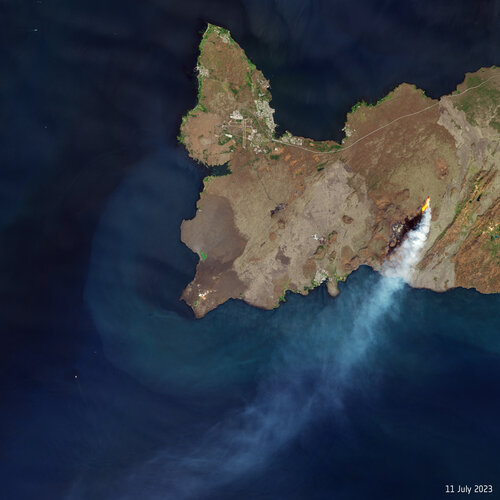
On 10 July 2023, a volcano some 30 km from Iceland’s capital, Reykjavik, erupted following heightened seismic activity in the area. Satellites orbiting above us have captured the molten lava and smoke plume puffing from the Litli-Hrútur volcano.
Satellites unveil the far-reaching impact of irrigation
25.7.2023 10:30
Globally, more than 70% of the freshwater withdrawn from Earth’s surface or from underground is used to irrigate crops. The need to produce more food for a growing population against the backdrop of climate change is challenging enough, but satellites reveal that extracting water doesn’t just affect the local environment – there are knock-on consequences for many aspects of the Earth system.
Rhodes wildfire forces thousands to flee
24.7.2023 14:58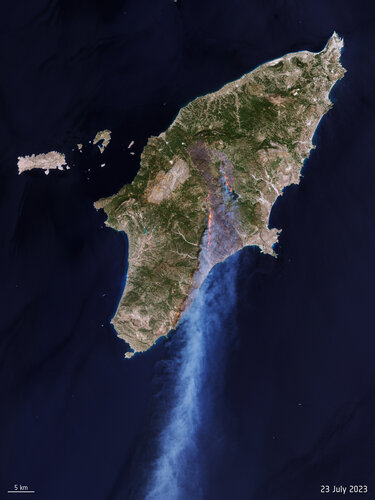 Image:
Rhodes wildfire forces thousands to flee
Image:
Rhodes wildfire forces thousands to flee
Journey back to Earth: Aeolus' historic reentry
21.7.2023 15:00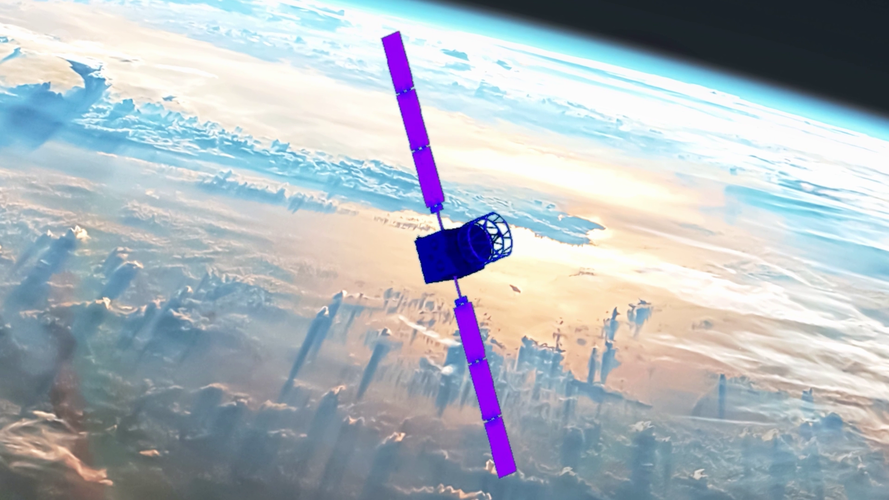 Video:
00:05:00
Video:
00:05:00
ESA’s wind mission Aeolus is coming home. After five years of improving weather forecasts, the satellite will return in a first-of-its-kind assisted reentry. At ESA’s Space Operations Centre in Germany, mission control will use the satellite’s remaining fuel to steer Aeolus during its return to Earth.
Find out more about the mission, its successes and how Aeolus is paving the way for safe reentries.
Earth from Space: New York
21.7.2023 10:00 Image:
This Copernicus Sentinel-2 image highlights the colours of autumn over the southern part of New York state in the US.
Image:
This Copernicus Sentinel-2 image highlights the colours of autumn over the southern part of New York state in the US.
Satellites map aftermath of Emilia-Romagna floods
20.7.2023 14:55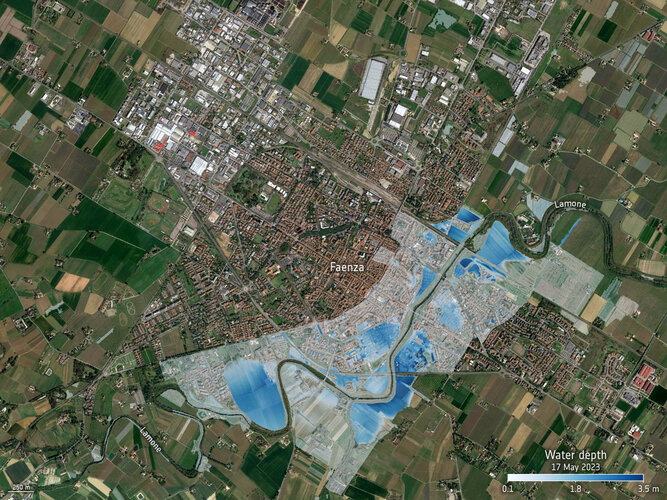
The Italian region of Emilia-Romagna was devastated by severe floods in May 2023, claiming lives and displacing thousands of people, resulting in an estimated €8.8 billion in damages. With the region still grappling with the aftermath, satellites have been instrumental in assessing the damages of the affected areas.
Replay: Aeolus reentry media briefing
19.7.2023 14:00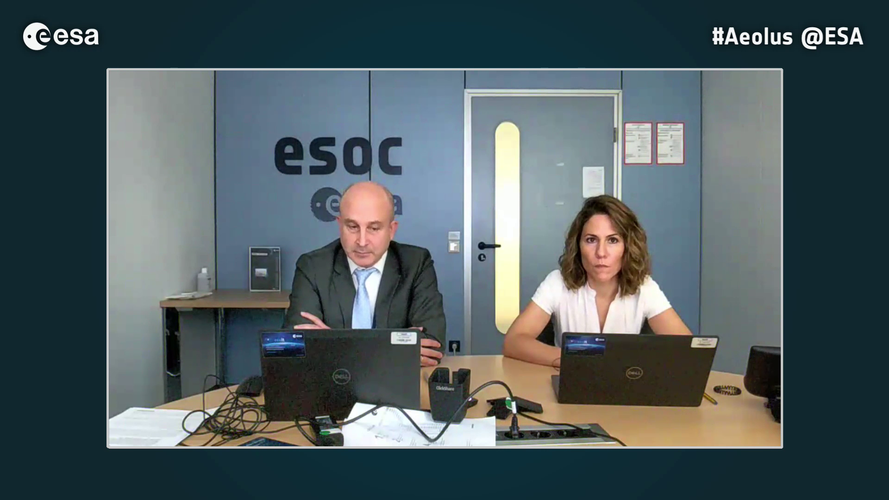 Video:
00:45:00
Video:
00:45:00
After completing its mission in orbit, ESA’s wind mission Aeolus will soon reenter Earth's atmosphere. Currently orbiting 320 km above, Aeolus is being kept in orbit with its remaining fuel. This fuel is running out, and the satellite will soon succumb to Earth’s atmosphere and gravity.
Going above and beyond what the satellite was technically designed to do, ESA is attempting a first-of-its-kind assisted reentry to reduce the (already very small) risk of damage from any fragments that survive the journey and reach the ground.
ESA held an online media briefing on 19 July 2023 to explain more about this assisted approach and answer questions.
Replay: Aeolus reentry media briefing
19.7.2023 14:00 Video:
00:40:24
Video:
00:40:24
After completing its mission in orbit, ESA’s wind mission Aeolus will soon reenter Earth's atmosphere. Currently orbiting 320 km above, Aeolus is being kept in orbit with its remaining fuel. This fuel is running out, and the satellite will soon succumb to Earth’s atmosphere and gravity.
Going above and beyond what the satellite was technically designed to do, ESA is attempting a first-of-its-kind assisted reentry to reduce the (already very small) risk of damage from any fragments that survive the journey and reach the ground.
ESA held an online media briefing on 19 July 2023 to explain more about this assisted approach and answer questions.
New strategy to keep pace with our changing world
18.7.2023 12:03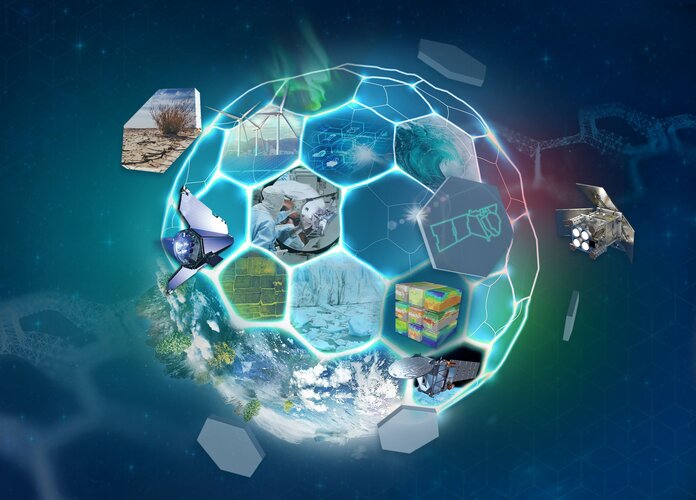
Fuelled largely by climate change, our planet is being subjected to environmental changes that are having an unprecedented global impact on humans, animals and plants. Shockingly, in certain locations these changes are occurring at a rate never before witnessed.
To keep pace with the challenges we face, ESA is embarking on a new Earth observation science strategy – and has reached out to the scientific community at this early stage in the process to help guide the Agency’s scientific agenda for the coming years.
The sound of Aeolus will blow you away
14.7.2023 11:00
After almost five years, ESA’s Aeolus wind satellite has completed its mission. Now, you can listen to the Life of Aeolus – an incredible wind orchestral piece that has been composed using data spanning Aeolus’ entire life in orbit around Earth.
Earth from Space: Ethiopian painting
14.7.2023 10:00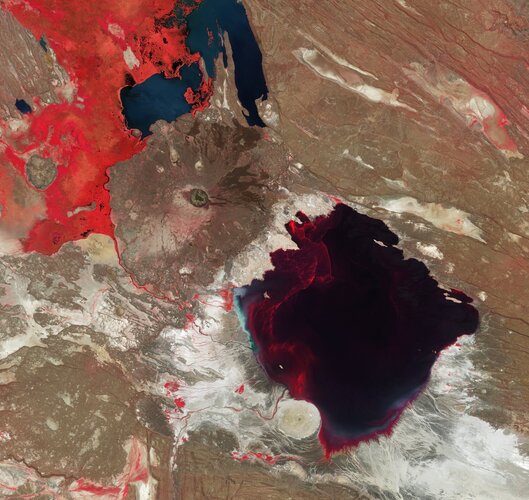 Image:
Reminiscent of an artist’s pallet, this striking false-colour image captured by the Copernicus Sentinel-2 mission features Lake Abbe in northeast Ethiopia.
Image:
Reminiscent of an artist’s pallet, this striking false-colour image captured by the Copernicus Sentinel-2 mission features Lake Abbe in northeast Ethiopia.
Europe braces for sweltering July
13.7.2023 8:45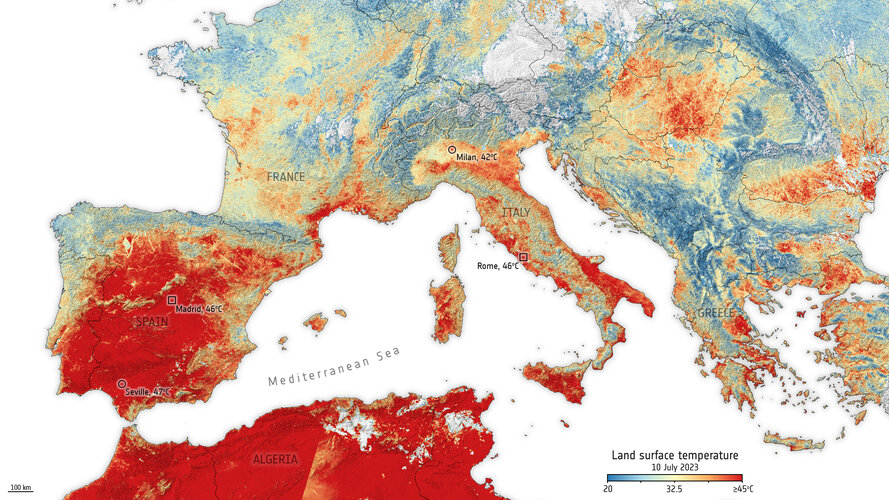
Temperatures are sizzling across Europe this week amid an intense and prolonged period of heat. And it’s only just begun. Italy, Spain, France, Germany and Poland are all facing a major heatwave with temperatures expected to climb to 48°C on the islands of Sicily and Sardinia – potentially the hottest temperatures ever recorded in Europe.
Europe braces for sweltering July
13.7.2023 8:45
Temperatures are sizzling across Europe this week amid an intense and prolonged period of heat. And it’s only just begun. Italy, Spain, France, Germany and Poland are all facing a major heatwave with air temperatures expected to climb to 48°C on the islands of Sicily and Sardinia – potentially the hottest temperatures ever recorded in Europe.
Europe braces for sweltering July
13.7.2023 8:45
Temperatures are sizzling across Europe this week amid an intense and prolonged period of heat. And it’s only just begun. Italy, Spain, France, Germany and Poland are all facing a major heatwave with temperatures expected to climb to 48°C on the islands of Sicily and Sardinia – potentially the hottest temperatures ever recorded in Europe.
Guiding Aeolus' safe reentry
10.7.2023 15:00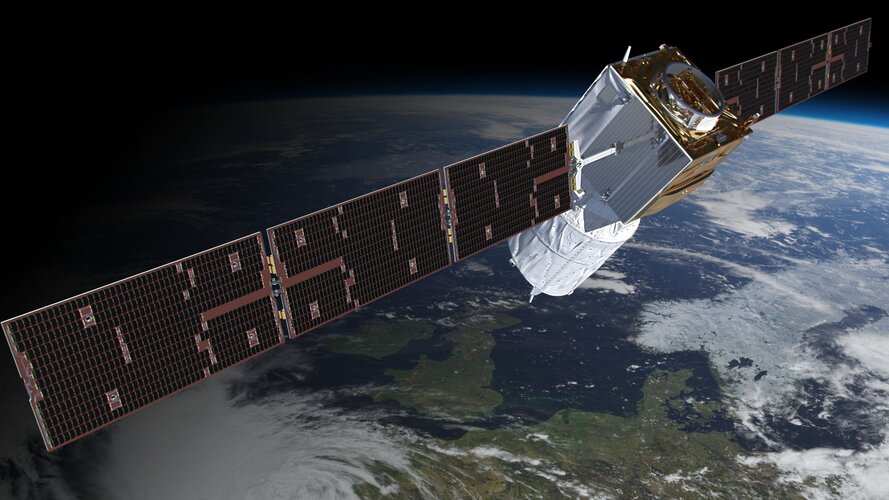
After exceeding its planned life in orbit, ESA’s Aeolus wind satellite is on its way back to Earth. The satellite is currently falling around 1 km a day, and its descent is accelerating. ESA’s spacecraft operators will soon intervene and attempt to guide Aeolus in a first-of-its-kind assisted reentry. Why is ESA doing this?
Earth from Space: Cyclone Mocha
7.7.2023 10:00 Image:
The Copernicus Sentinel-3 mission captured this image of the powerful Cyclone Mocha on 13 May 2023 as it made its way across the Bay of Bengal heading northeast towards Bangladesh and Myanmar.
Image:
The Copernicus Sentinel-3 mission captured this image of the powerful Cyclone Mocha on 13 May 2023 as it made its way across the Bay of Bengal heading northeast towards Bangladesh and Myanmar.
First data from Europe’s Lightning Imager
3.7.2023 15:00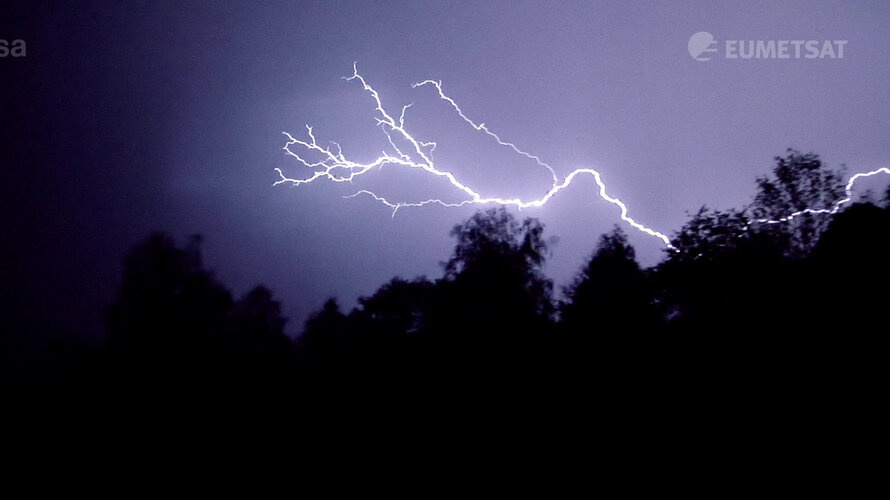 Video:
00:04:49
Video:
00:04:49
Discover the first results from Europe’s first Lightning Imager onboard the Meteosat Third Generation. The Lightning Imager can continuously detect rapid flashes of lighting in Earth’s atmosphere whether day or night from a distance of 36 000 km.
This is the first time a geostationary weather satellite has the capability to detect lightning across Europe, Africa and the surrounding waters. Each camera can capture up to 1000 images per second and will continuously observe lightning activity from space. The data will give weather forecasters greater confidence in their predictions of severe storms.
European satellite strikes lightning
3.7.2023 13:50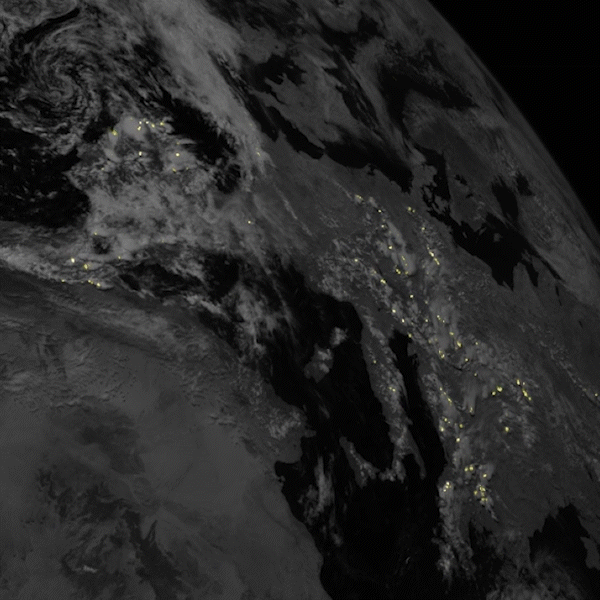
The first ever satellite instrument capable of continuously detecting lightning across Europe and Africa has now been switched on. New animations from the innovative ‘Lighting Imager’ confirm the instrument will revolutionise the detection and prediction of severe storms.
Watch live: First data from Europe’s first lightning detector
3.7.2023 11:40Watch live: First data from Europe’s first Lightning Imager
Tune in at 14:00 CEST for the first results from MTG’s lightning detector
Space to empower rural food producers
30.6.2023 11:00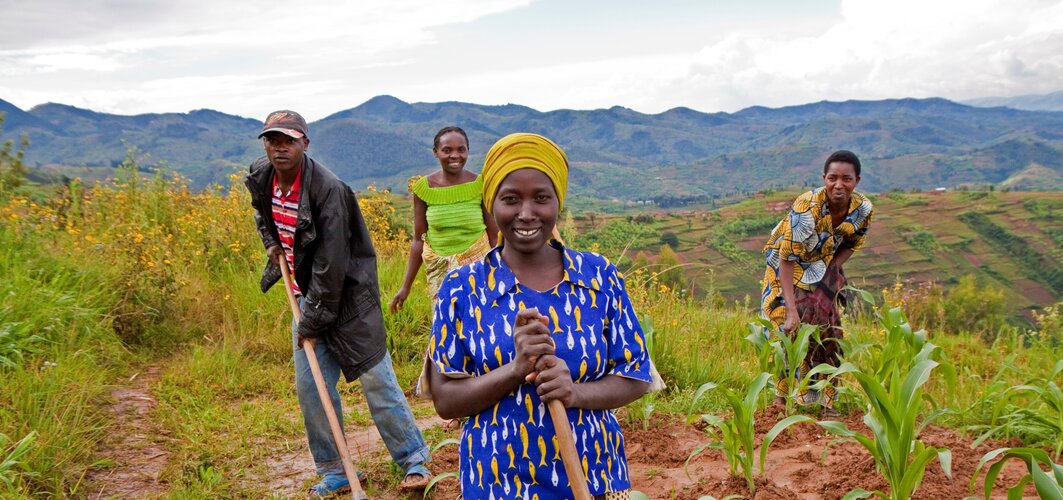
ESA has strengthened their partnership with the UN International Fund for Agricultural Development (IFAD) to help vulnerable small-scale food producers not only increase their ability to grow food but adapt to climate change by using state-of-the-art Earth observation data.
Earth from Space: Southwest Netherlands
30.6.2023 10:00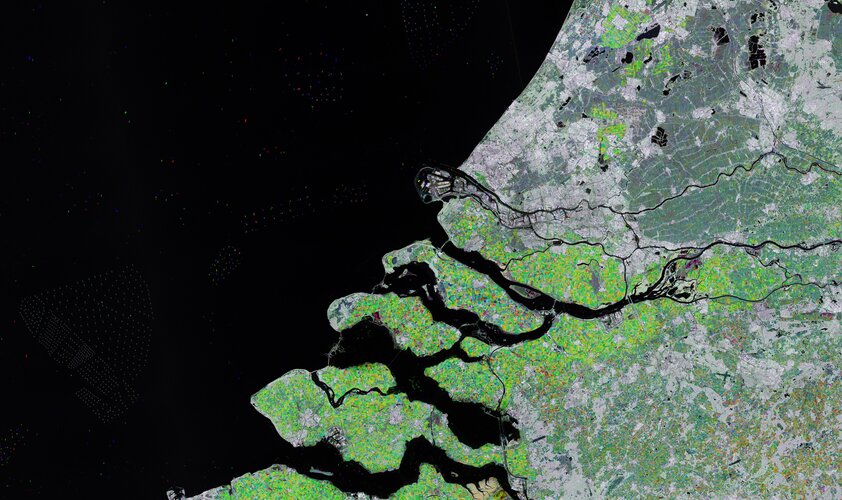 Image:
Rotterdam and part of the Zeeland province in southwest Netherlands are featured in this radar image acquired by Copernicus Sentinel-1.
Image:
Rotterdam and part of the Zeeland province in southwest Netherlands are featured in this radar image acquired by Copernicus Sentinel-1.
Earth from Space: Tashkent, Uzbekistan
23.6.2023 10:00 Image:
The Copernicus Sentinel-2 mission takes us over Tashkent, the capital city of Uzbekistan.
Image:
The Copernicus Sentinel-2 mission takes us over Tashkent, the capital city of Uzbekistan.
Paris Air Show Live – Session on understanding Earth’s water and carbon cycles from space
22.6.2023 13:30 Video:
01:08:04
Video:
01:08:04
By using concrete examples of the water and carbon cycles, the speakers in this session focus on the grand science questions and how we can turn them into answers and solutions most useful to decision-makers at the front line of the climate crisis. Earth is a highly dynamic system where the transport and exchanges of energy and matter are influenced by a multitude of processes and feedback mechanisms. Untangling these complex processes to better understand how Earth works as a system is a major challenge; a challenge that satellites, with their global view, are ideally positioned to tackle. While each mission gives us unique insights, it is by combining their data that makes scientific findings shine the brightest. This, in turn, puts European and international collaboration at the heart of Earth observation today.
Paris Air Show live - From Earth science to climate action
21.6.2023 14:15Paris Air Show live: From Earth science to climate action
22 June at 12:00 CEST: Earth's water and carbon cycles from space
UK suffers marine heatwave
20.6.2023 15:44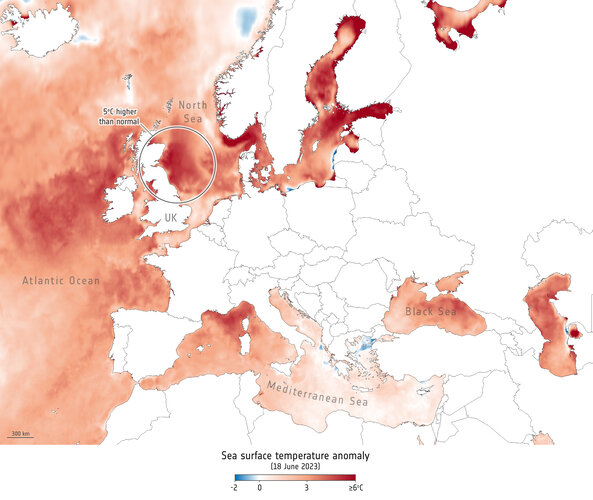 Image:
Some of the most severe marine heat increases on Earth are occurring in the seas surrounding the UK and Ireland. Satellite measurements show that water temperatures in certain areas are above average for this time of year.
Image:
Some of the most severe marine heat increases on Earth are occurring in the seas surrounding the UK and Ireland. Satellite measurements show that water temperatures in certain areas are above average for this time of year.
New Space companies join Copernicus
19.6.2023 15:00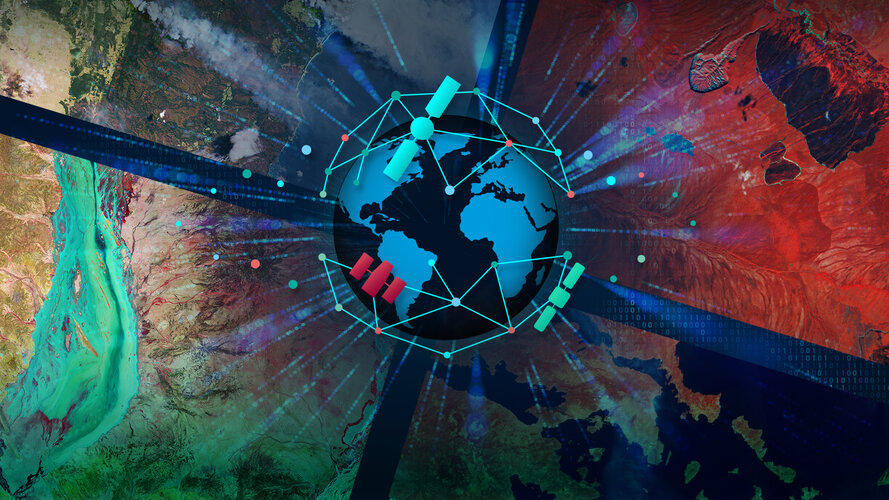
With commercial companies playing an increasingly important role in creating a dynamic and innovative space industry, nine New Space satellite data suppliers have joined the Copernicus programme as ‘Contributing Missions’. Today, at the Le Bourget Paris Air Show, ESA and the European Commission further embraced the era of New Space by welcoming these nine companies into the fold and celebrating the contribution they will make in monitoring our changing world.
Earth from Space: Eastern Mediterranean
16.6.2023 10:00 Image:
Copernicus Sentinel-3’s wide view captures the eastern edge of the Mediterranean and surrounding countries.
Image:
Copernicus Sentinel-3’s wide view captures the eastern edge of the Mediterranean and surrounding countries.
Carbon monoxide from fires in Canada
15.6.2023 14:37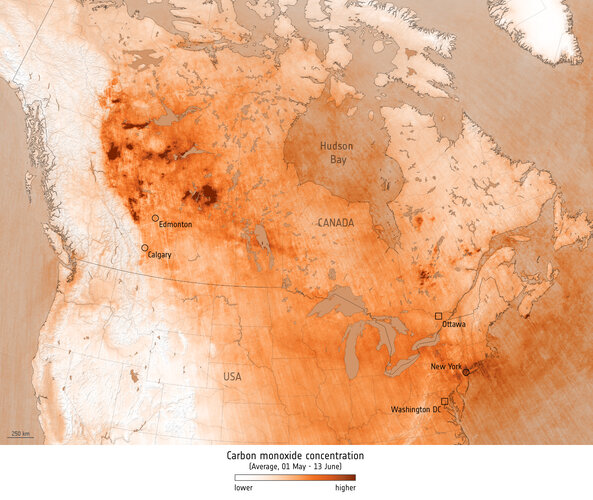 Image:
As climate change increases the risk of wildfires across the globe, the spate of fires that hit Canada in May and June suggest that 2023 is on course to be the country’s worst fire season to date. These fires not only pose a serious threat to human life, wildlife, the environment and property, they also affect air quality.
Image:
As climate change increases the risk of wildfires across the globe, the spate of fires that hit Canada in May and June suggest that 2023 is on course to be the country’s worst fire season to date. These fires not only pose a serious threat to human life, wildlife, the environment and property, they also affect air quality.
Forecasting fires with SMOS
14.6.2023 14:01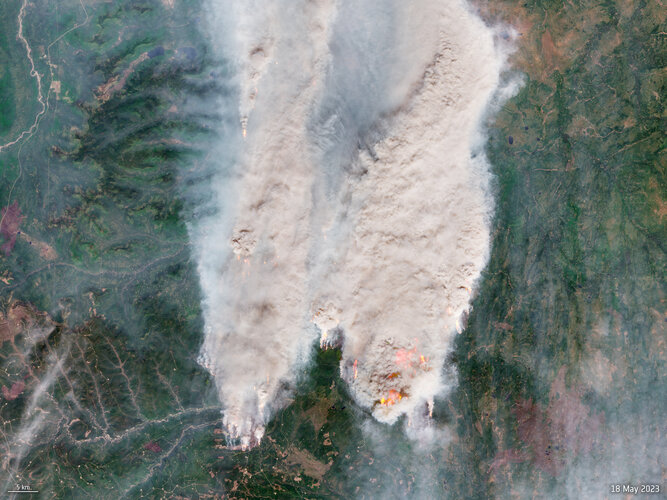
As the current wildfires in Canada show, climate change is increasing the risk and extent of wildfires across the globe. ESA, along with the European Centre for Medium-Range Weather Forecasts have taken a new approach by using realtime observations from ESA’s Soil Moisture and Ocean Salinity satellite mission to better anticipate the outbreak of fires.
Earth from Space: Cook Strait, New Zealand
9.6.2023 10:00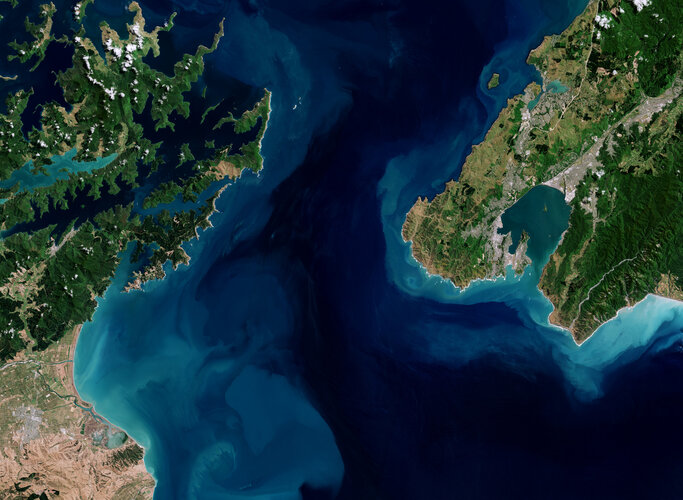 Image:
The Copernicus Sentinel-2 mission takes us over Cook Strait, which separates New Zealand's North and South Islands.
Image:
The Copernicus Sentinel-2 mission takes us over Cook Strait, which separates New Zealand's North and South Islands.
25 years of Copernicus
9.6.2023 9:00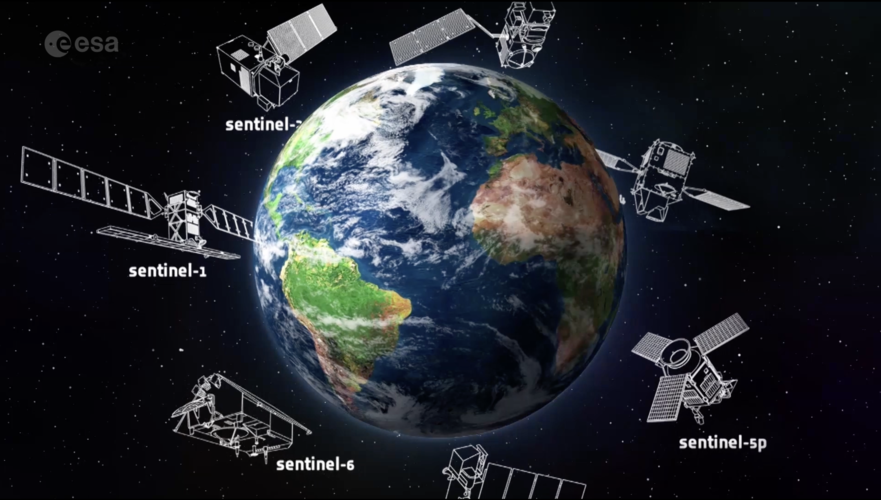 Video:
00:05:05
Video:
00:05:05
25 years ago, Copernicus set out to transform the way we see our planet. It is the largest environmental monitoring programme in the world. Learn more about the Copernicus programme and the Sentinel satellite missions developed by ESA.
25 years of Copernicus
8.6.2023 9:00 Video:
00:05:05
Video:
00:05:05
25 years ago, Copernicus set out to transform the way we see our planet. It is the largest environmental monitoring programme in the world. Learn more about the Copernicus programme and the Sentinel satellite missions developed by ESA.
25 times Copernicus made the headlines
7.6.2023 15:55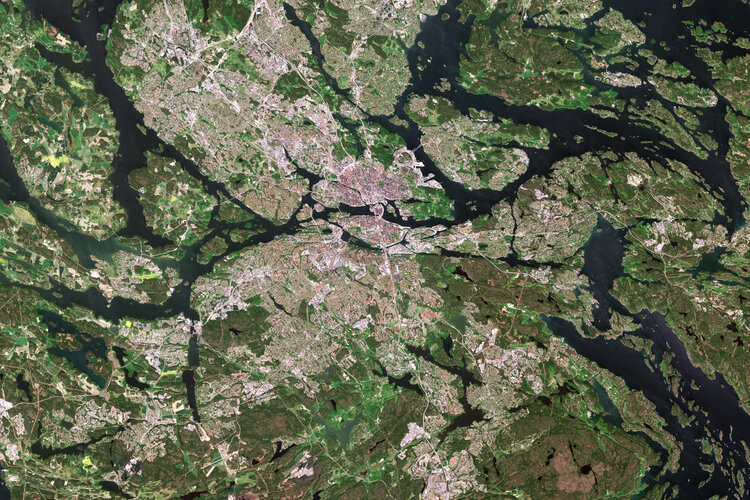
Twenty-five years ago, Copernicus set out to transform the way we see our planet. Now, well established as the largest environmental monitoring programme in the world, it returns a whopping 16 terabytes of high-quality data every single day. To mark a quarter-century of European success in space, we look back at a selection of 25 Copernicus highlights.
Earth from Space: Anchorage, Alaska
2.6.2023 10:00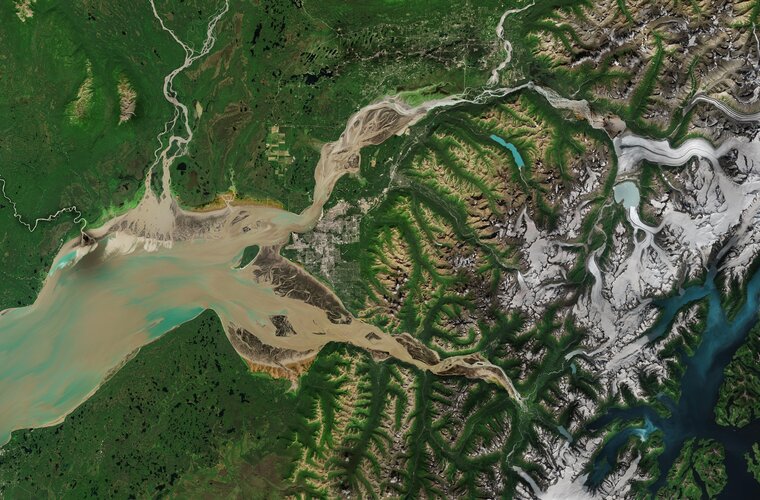 Image:
From the Chugach Mountains on the right to the Cook Inlet on the left, this Copernicus Sentinel-2 image features the varied landscape surrounding Anchorage, the largest and most populous city in the state of Alaska in the United States.
Image:
From the Chugach Mountains on the right to the Cook Inlet on the left, this Copernicus Sentinel-2 image features the varied landscape surrounding Anchorage, the largest and most populous city in the state of Alaska in the United States.
CubeMAP mission development halted
1.6.2023 14:00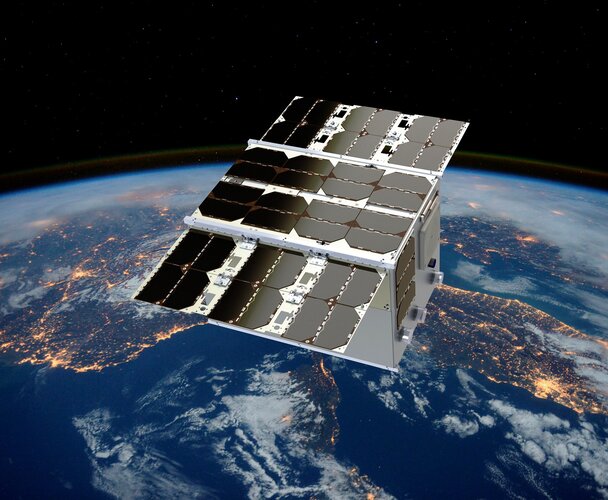
After very careful consideration, ESA’s Earth Observation Programme Board has taken the decision to terminate the development of CubeMAP as a Scout satellite mission. This decision is based on the development path exceeding the programmatic constraints related to the timeline and budgetary boundaries allocated for this category of New Space mission.
Accelerating the Green Transition
1.6.2023 10:30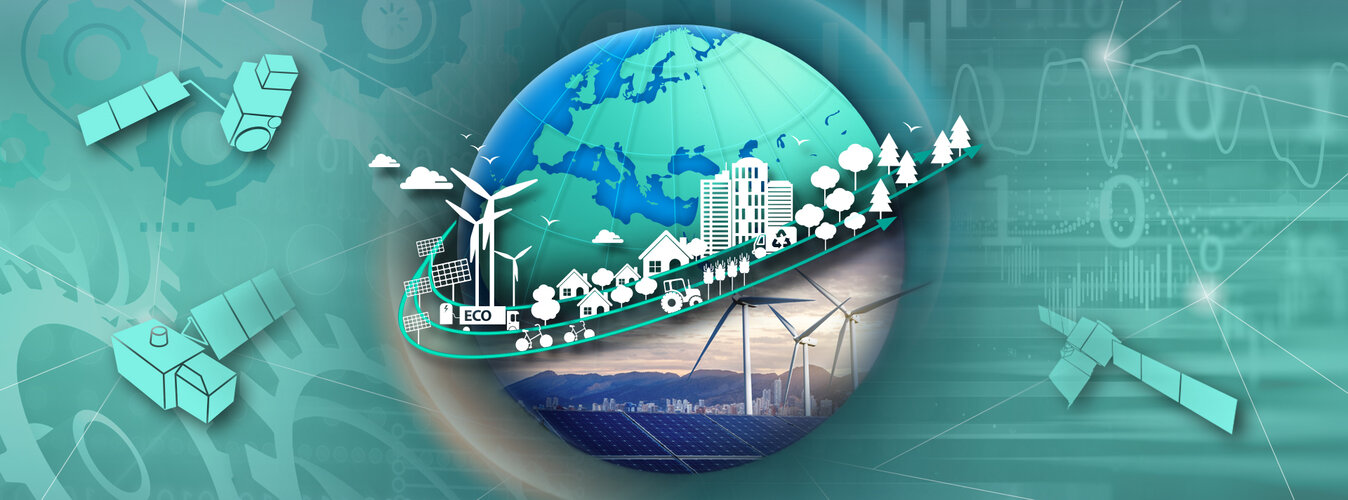
Earth observation has been essential in identifying and monitoring climate change. Satellite data form the baseline for effective European mitigation and adaptation strategies to support the Green Transition, the European Union's Green Deal and the global goal of becoming carbon neutral by 2050.
ESA has now concluded its initial phase of a pilot initiative in Austria that demonstrates the untapped potential of space technologies by providing actionable Earth observation information to accelerate the Green Transition for both society and the economy.
Accelerating the Green Transition
1.6.2023 10:30
Earth observation has been essential in identifying and monitoring climate change. Satellite data form the baseline for effective European mitigation and adaptation strategies to support the Green Transition, the European Union to reach its goal of becoming carbon neutral by 2050, as well as its Green Deal.
ESA has now concluded its initial phase of a pilot initiative in Austria that demonstrates the untapped potential of space technologies by providing actionable Earth observation information to accelerate the Green Transition for both society and the economy.
Register for ESA’s first Earth observation commercialisation event
31.5.2023 8:55
Registration is now open for ESA’s first-ever Earth Observation Commercialisation Forum. Taking place at ESA Headquarters in Paris from 30 to 31 October 2023, investors, institutions, entrepreneurs and companies of any size from the Earth observation sector will now be able to come together and discuss the commercial potential and challenges of Earth observation, together with the technical, industrial and risk-capital support available to European companies.
Aeolus enhances volcanic ash forecasts for aviation safety
30.5.2023 8:55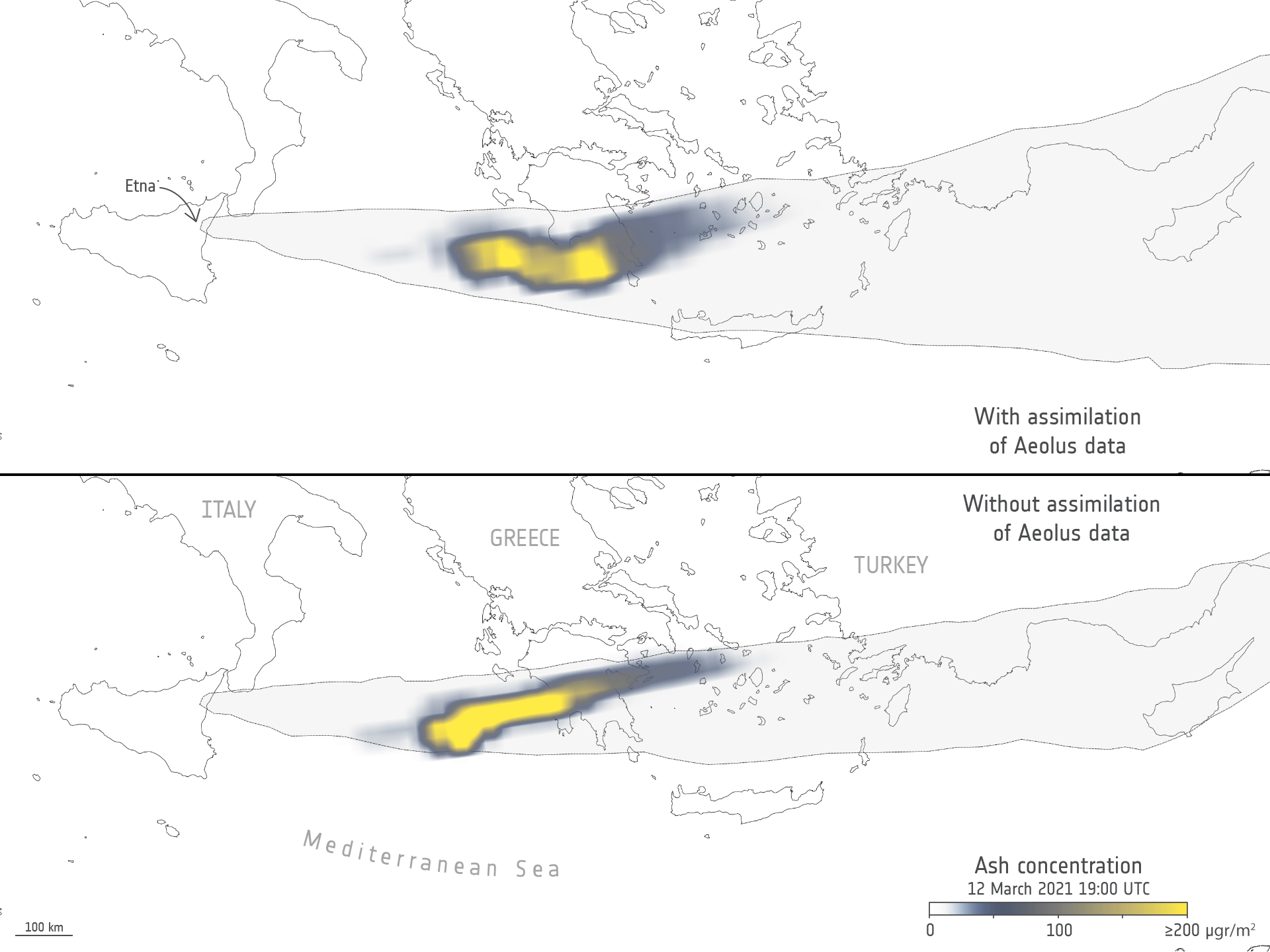
Aeolus enhances volcanic ash forecasts for aviation safety
Earth from Space: São Paulo, Brazil
26.5.2023 10:00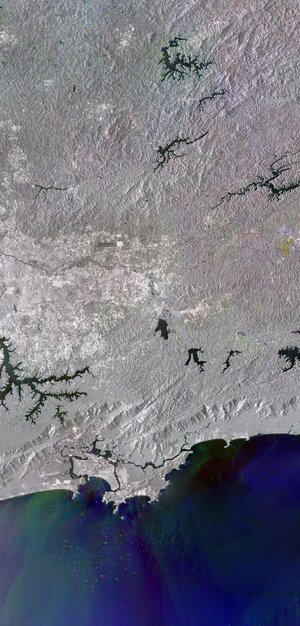 Image:
This radar image from Copernicus Sentinel-1 shows the city of São Paulo and part of the homonymous state in southeast Brazil.
Image:
This radar image from Copernicus Sentinel-1 shows the city of São Paulo and part of the homonymous state in southeast Brazil.
An improved view of global sea ice
25.5.2023 8:55
Earth’s declining ice is without a doubt one of the clearest signs of climate change. A new high-resolution sea-ice concentration data record has just been released as part of ESA’s Climate Change Initiative – providing new insights of sea ice concentration across the globe.
Fighting wildfires in France | FIRE Preview
24.5.2023 16:00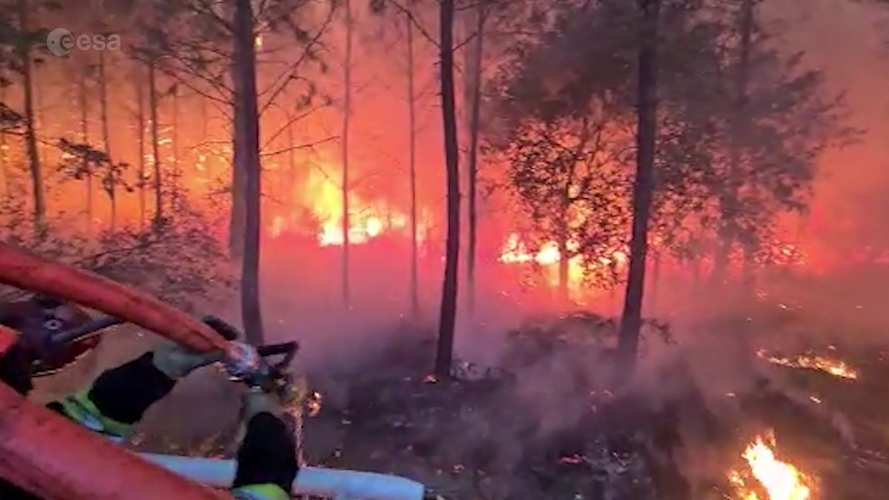 Video:
00:12:42
Video:
00:12:42
Enjoy a sneak peek of ESA’s new documentary that looks at fire in all its fury - and how satellite technology is helping to mitigate this consequence of climate change. Join us on this journey as we meet the firefighter who fought one of the largest wildfires in his career, climate scientists working with satellite data, and the people on the frontline using these data to aid those affected. The full documentary will be released this summer.
Fighting wildfires in France | FIRE Preview
24.5.2023 16:00 Video:
00:12:42
Video:
00:12:42
Enjoy a sneak peek of ESA’s new documentary that looks at fire in all its fury - and how satellite technology is helping to mitigate this consequence of climate change. Join us on this journey as we meet the firefighter who fought one of the largest wildfires in his career, climate scientists working with satellite data, and the people on the frontline using these data to aid those affected. The full documentary will be released this summer.
Fighting wildfires in France | FIRE Preview
24.5.2023 16:00 Video:
00:12:42
Video:
00:12:42
Enjoy a sneak peek of ESA’s new documentary that looks at fire in all its fury - and how satellite technology is helping to mitigate this consequence of climate change. Join us on this journey as we meet the firefighter who fought one of the largest wildfires in his career, climate scientists working with satellite data, and the people on the frontline using these data to aid those affected. The full documentary will be released this summer.
Fighting wildfires in France from space | FIRE Preview
24.5.2023 16:00 Video:
00:12:42
Video:
00:12:42
Enjoy a sneak peek of ESA’s new documentary that looks at fire in all its fury - and how satellite technology is helping to mitigate this consequence of climate change. Join us on this journey as we meet the firefighter who fought one of the largest wildfires in his career, climate scientists working with satellite data, and the people on the frontline using these data to aid those affected. The full documentary will be released this summer.
Satellites provide crucial insights into Arctic amplification
24.5.2023 9:45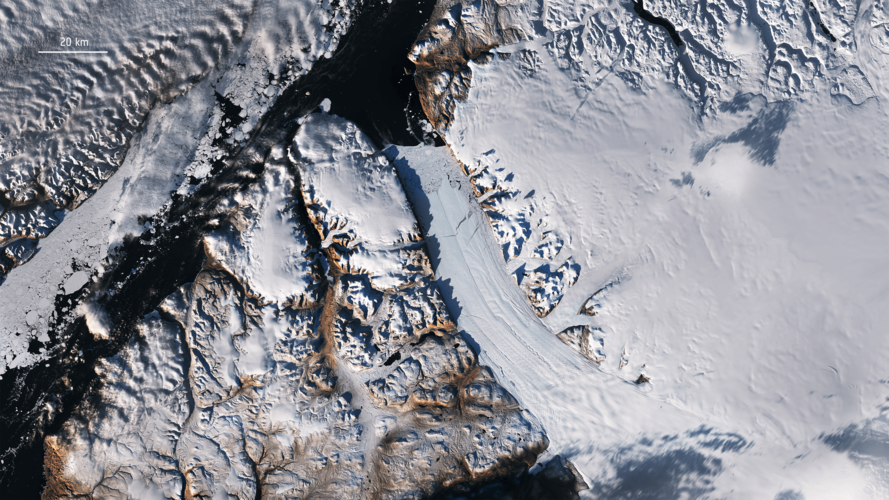
The Arctic, once again at the forefront of climate change, is experiencing disproportionately higher temperature increases compared to the rest of the planet, triggering a series of cascading effects known as Arctic amplification. As concerns continue to grow, satellites developed by ESA have become indispensable tools in understanding and addressing the complex dynamics at play and the far-reaching consequences for the environment and human societies.
Satellites provide crucial insights into Arctic amplification
24.5.2023 9:45
The Arctic, once again at the forefront of climate change, is experiencing disproportionately higher temperature increases compared to the rest of the planet, triggering a series of cascading effects known as Arctic amplification.
As concerns continue to grow, satellites developed by ESA have become indispensable tools in understanding and addressing the complex dynamics at play and the far-reaching consequences for the environment and human societies.
ESA receives Space for Climate Protection Award
23.5.2023 12:20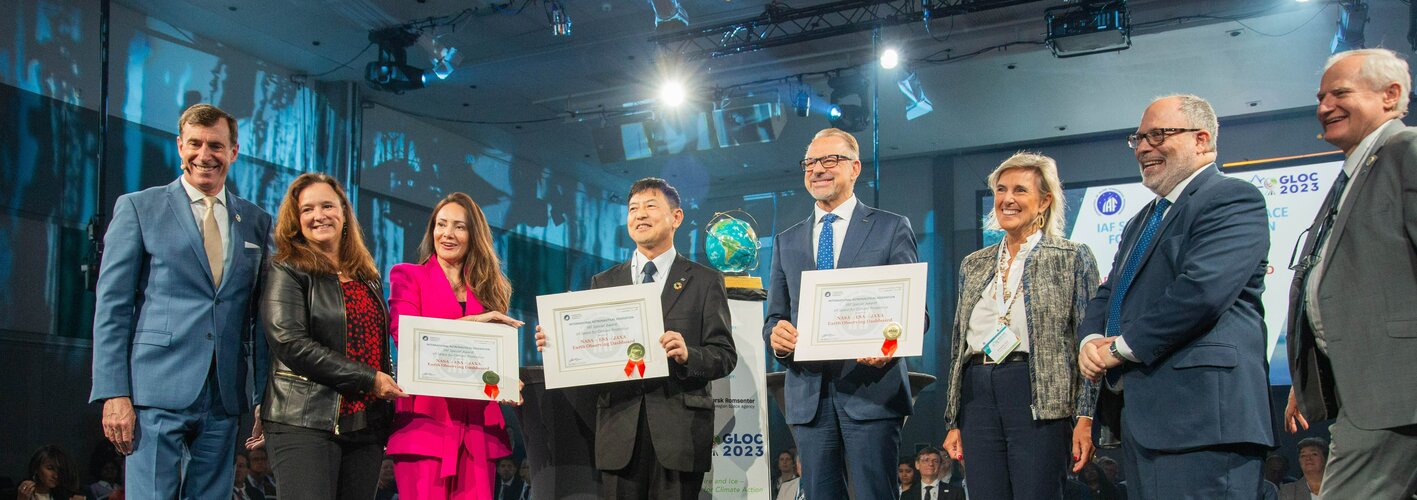
ESA has been presented the ‘Space for Climate Protection’ Special Award by the International Astronautical Federation during the Global Space Conference on Climate Change – currently taking place in Oslo, Norway.
Annual global ice loss simulated over Oslo
23.5.2023 9:00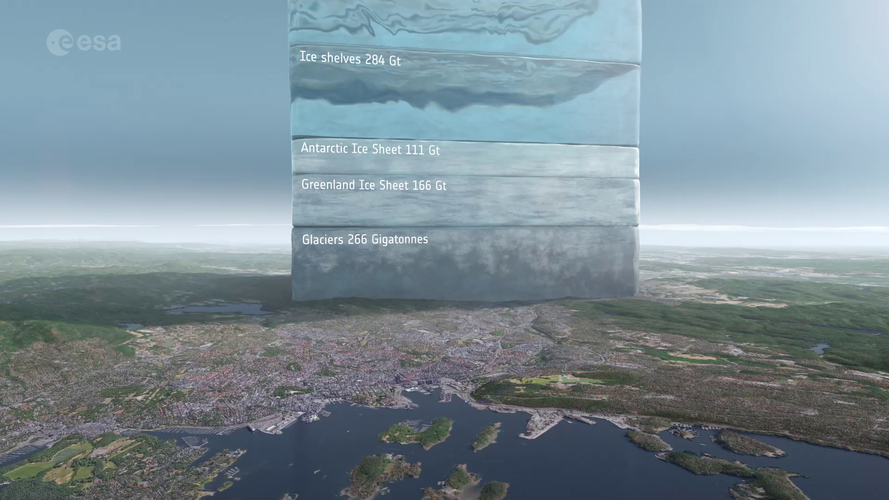 Video:
00:01:20
Video:
00:01:20
Satellites play a vital role in monitoring the rapid changes taking place in the Arctic. Tracking ice lost from the world’s glaciers, ice sheets and frozen land shows that Earth is losing ice at an accelerating rate.
Using information from ESA’s ERS, Envisat and CryoSat satellites as well as the Copernicus Sentinel-1 and Sentinel-2 missions, research led by Tom Slater of the University of Leeds, found that the rate at which Earth has lost ice has increased markedly within the past three decades. Currently, more than a trillion tonnes of ice is lost each year.
To put this into perspective, this is equivalent to an ice cube measuring 10x10x10 km over Oslo’s skyline. Putting it another way, the amount of ice loss globally is equivalent to 12 000 times the annual water use of the Norwegian capital.
The sooner Earth’s temperature is stabilised, the more manageable the impacts of ice loss will be.
Continuity in satellite data is the key to predicting future ice losses, and to assist in mitigating the threats posed by sea-level rise, shrinking high mountain glaciers and further climate feedbacks. The Copernicus Expansion missions, CRISTAL, CIMR and ROSE-L have been designed to fill the gaps in current Sentinel capabilities for comprehensive monitoring of changes in the global ice cover.
Watch now: Global Space Conference on Climate Change
23.5.2023 8:53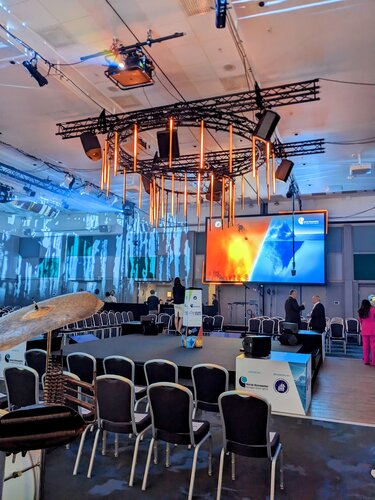
Watch now: Global Space Conference on Climate Change
Earth from Space: Oslo, Norway
19.5.2023 10:00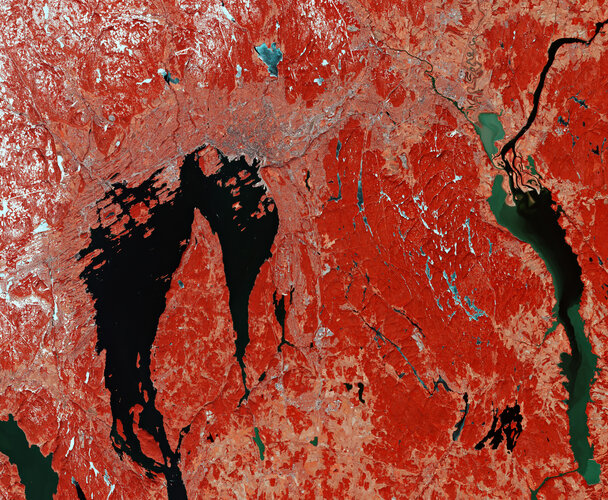 Image:
The Copernicus Sentinel-2 mission takes us over Oslo, Norway’s capital and largest city, and host of the 2023 Global Space Conference on Climate Change, taking place on 23–25 May.
Image:
The Copernicus Sentinel-2 mission takes us over Oslo, Norway’s capital and largest city, and host of the 2023 Global Space Conference on Climate Change, taking place on 23–25 May.
Our oceans are in hot water
17.5.2023 16:30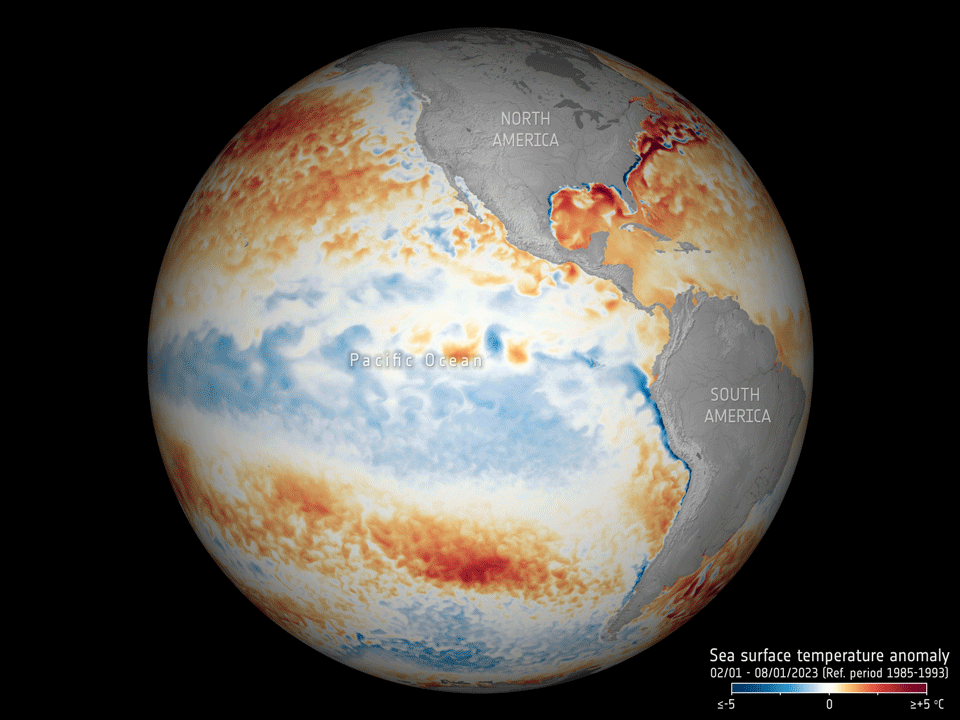
Adding to the grim list of record ice losses, record air temperatures and record droughts, which have all hit the headlines recently, the temperature of the surface waters of our oceans is also at an all-time high. With an El Niño looming, concerns are that we will soon be facing even worse extremes. Satellites orbiting overhead are being used to carefully track the patterns that lead up to El Niño to further understand and predict the consequences of this cyclic phenomenon against the backdrop of climate change.
Our oceans are in hot water
17.5.2023 16:30
Adding to the grim list of record ice losses, record air temperatures and record droughts, which have all hit the headlines recently, the temperature of the surface waters of our oceans is also at an all-time high. With an El Niño looming, concerns are that we will soon be facing even worse extremes. Satellites orbiting overhead are being used to carefully track the patterns that lead up to El Niño to further understand and predict the consequences of this cyclic phenomenon against the backdrop of climate change.
Earth from Space: Nishinoshima island, Japan
12.5.2023 10:00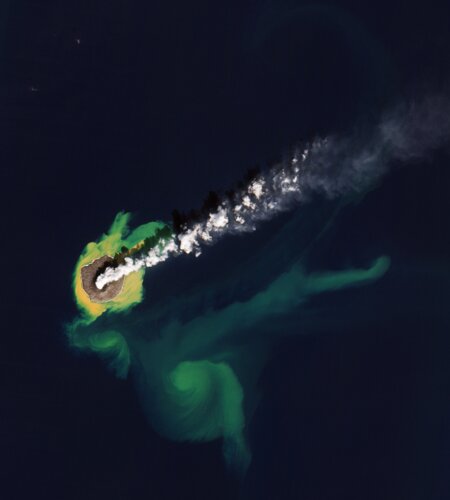 Image:
This Copernicus Sentinel-2 image features the Japanese island of Nishinoshima, in the northwest Pacific Ocean.
Image:
This Copernicus Sentinel-2 image features the Japanese island of Nishinoshima, in the northwest Pacific Ocean.
Monitoring fluctuating forest carbon from space
11.5.2023 12:31
Monitoring fluctuating forest carbon from space
Aeolus’ fiery demise to set standard for safe reentry
8.5.2023 13:08
ESA’s wind mission, Aeolus, will soon be lowered in orbit leading to its fiery reentry and burn-up through Earth’s atmosphere. ESA’s efforts to ensure a safe return go well beyond international standards and place the Agency in the lead for space safety.
Earth from Space: Farming the desert
5.5.2023 10:00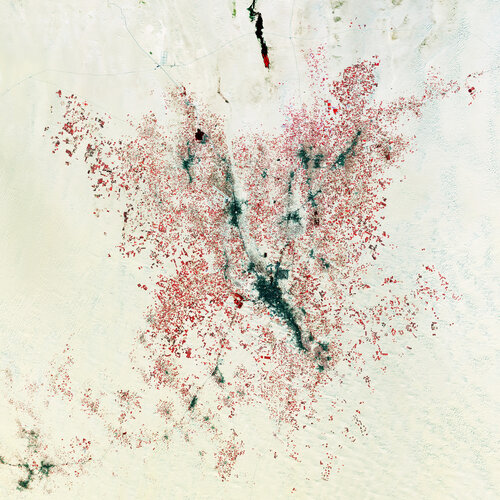 Image:
The Copernicus Sentinel-2 mission takes us over El Oued, in northeast Algeria, about 80 km west of the border with Tunisia.
Image:
The Copernicus Sentinel-2 mission takes us over El Oued, in northeast Algeria, about 80 km west of the border with Tunisia.
Meteosat Third Generation's first stunning image
4.5.2023 14:00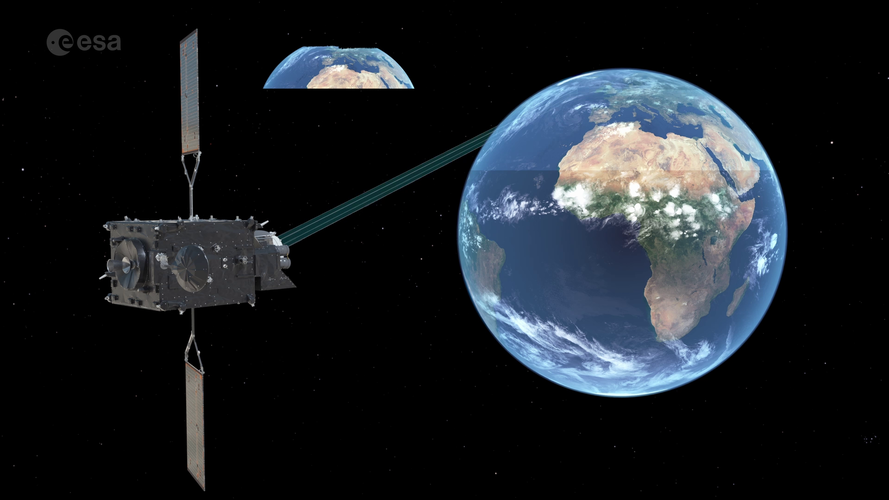 Video:
00:03:57
Video:
00:03:57
Europe’s latest weather satellite, the Meteosat Third Generation Imager, has just delivered its first image of Earth. What does this satellite do exactly? And what does this mean for weather forecasting? Learn more about the Meteosat Third Generation and how this new generation of satellites is set to revolutionise weather forecasting in Europe.
The Meteosat Third Generation image can be downloaded here.
New weather satellite reveals spectacular images of Earth
4.5.2023 10:00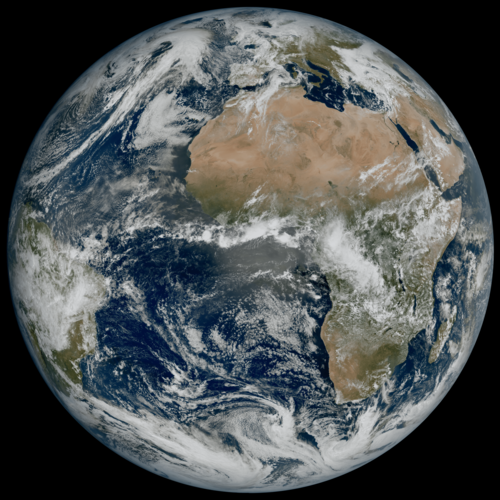
Europe’s latest weather satellite, the Meteosat Third Generation Imager, has just delivered its first view of Earth – revealing conditions over Europe, Africa and the Atlantic in remarkable detail.
Earth from Space: Blooming California
28.4.2023 10:00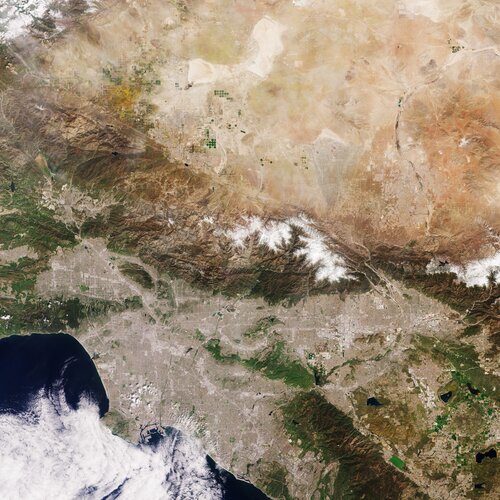 Image:
Captured by the Copernicus Sentinel-2 mission on 8 April 2023, this image shows Los Angeles and part of the hinterland in Southern California.
Image:
Captured by the Copernicus Sentinel-2 mission on 8 April 2023, this image shows Los Angeles and part of the hinterland in Southern California.
CryoSat reveals ice loss from glaciers
26.4.2023 15:00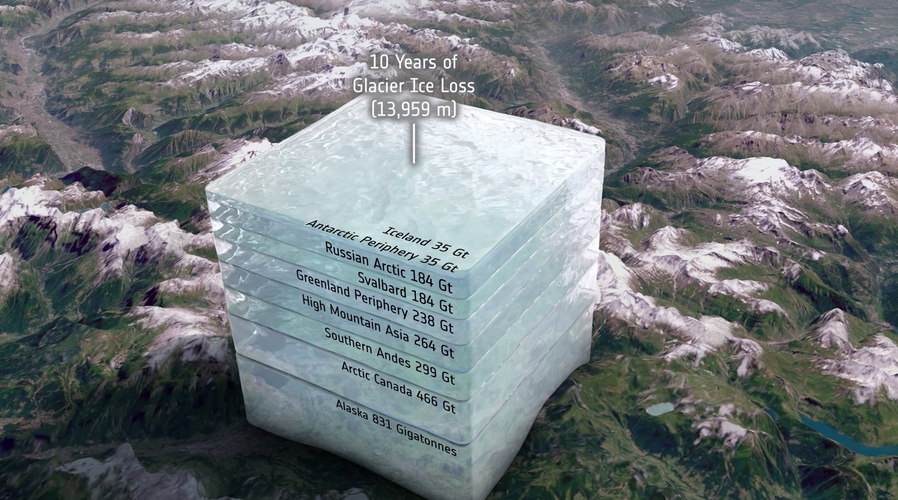
When one thinks of the damage that climate change is doing, it’s probable that what comes to mind is a vision of huge lumps of ice dropping off one of the polar ice sheets and crashing into the ocean. While Greenland and Antarctica are losing masses of ice, so too are most of the glaciers around the world, but it’s tricky to measure how much ice they are shedding.
Thanks to ESA’s CryoSat satellite and a breakthrough way of using its data, scientists have discovered that glaciers worldwide have shrunk by a total of 2% in just 10 years, and it’s because of higher air temperatures.
The future of gravity is MAGIC
25.4.2023 16:08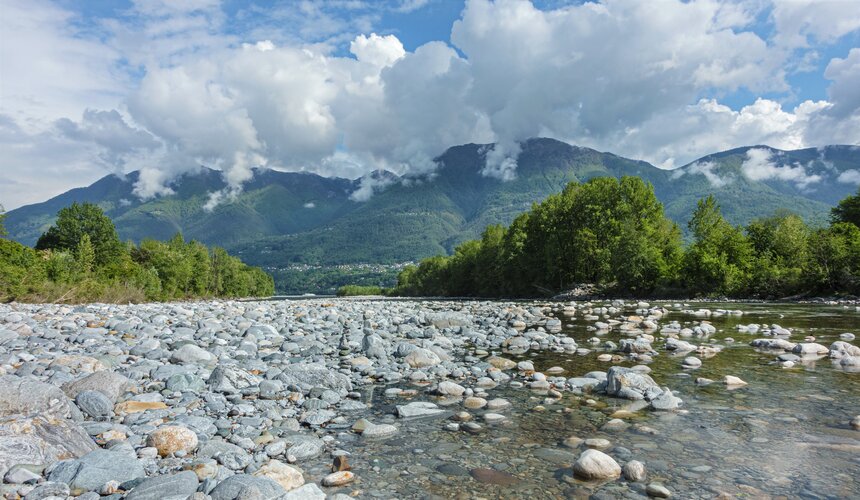
The latest European State of the Climate report states that, last year, Europe suffered its hottest summer on record. The heat and a persistent lack of rain caused drought which, at its peak, affected much of the continent. This not only illustrates the reality of climate change, but also how precarious our supply of freshwater can be, even in western Europe where the climate is relatively moderate.
By delivering frequent and accurate gravity measurements, a new space mission called MAGIC, a cooperation between ESA and NASA, will help make the important task of managing our precious water supplies more efficient.
Earth from Space: Rome, Italy
21.4.2023 10:00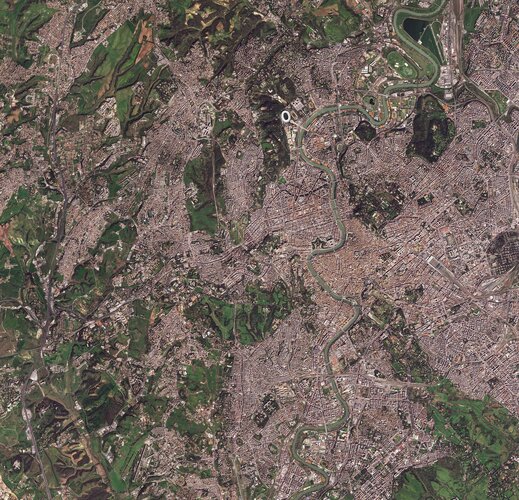 Image:
The historic centre of Rome, Italy’s capital city, is featured in this image captured on 28 March 2023.
Image:
The historic centre of Rome, Italy’s capital city, is featured in this image captured on 28 March 2023.
Introducing World Cereal
20.4.2023 14:05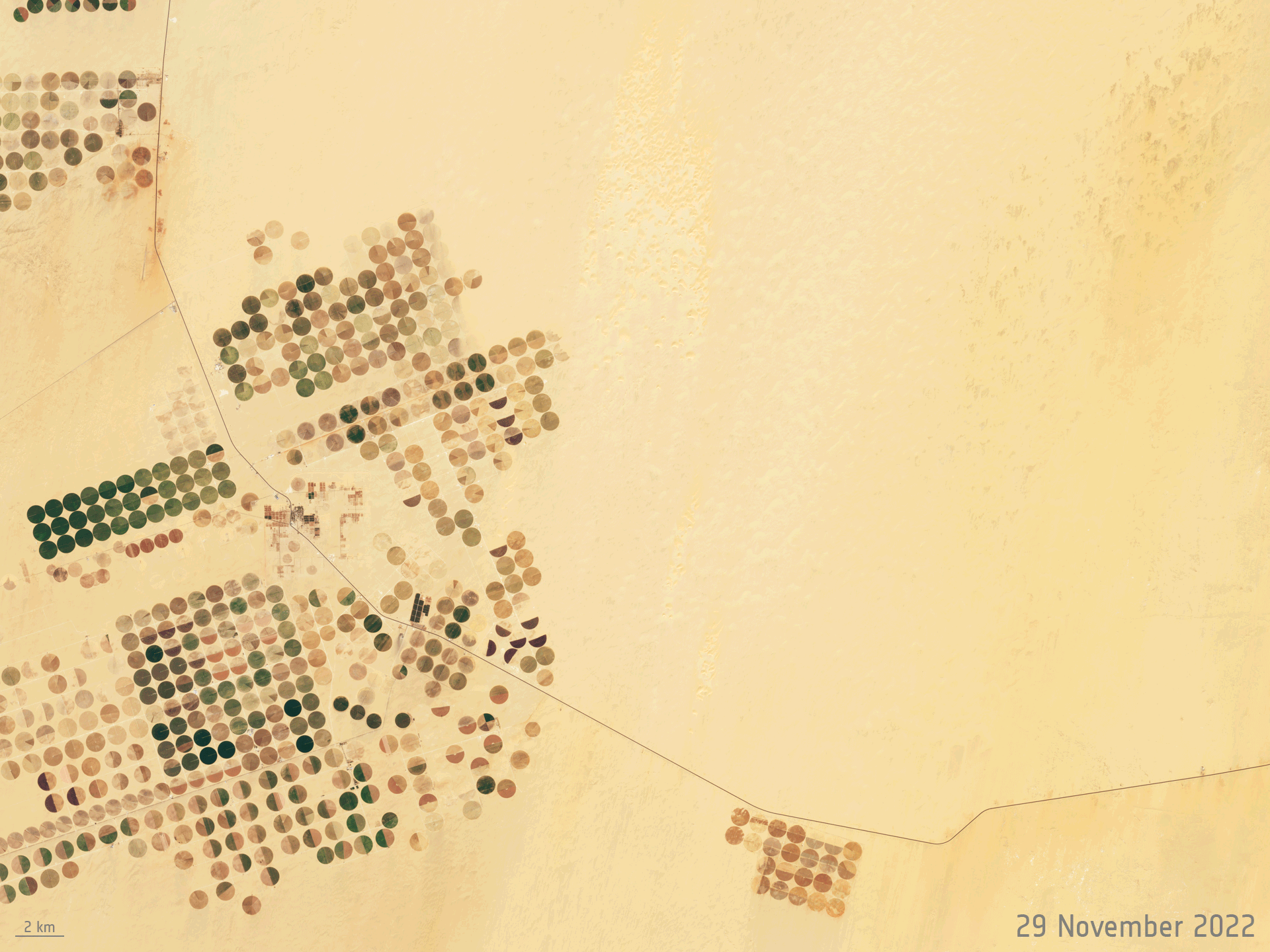
Global food security is a major challenge in the face of population growth and climate change. One of the first steps in achieving food security for all is to know which crops are growing where and how – each season. Launching today, ESA’s WorldCereal is the world’s first dynamic system capable of providing seasonally updated crop information to help monitor agricultural production across the globe.
Ice loss from Greenland and Antarctica hits new record
20.4.2023 9:00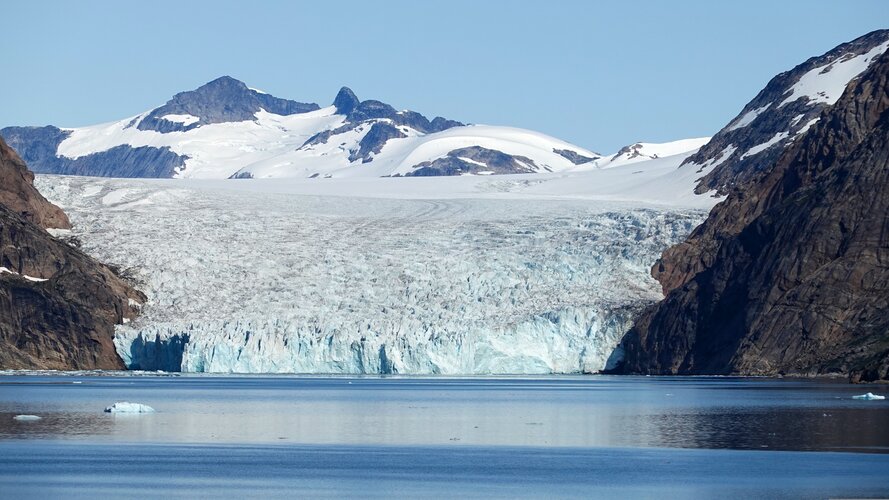
A report, publishing today, states that ice loss from Greenland and Antarctica has increased fivefold since the 1990s, and now accounts for a quarter of sea-level rise.
Ice loss from Greenland and Antarctica hits new record
20.4.2023 9:00
A report, released today, states that ice loss from Greenland and Antarctica has increased fivefold since the 1990s, and now accounts for a quarter of sea-level rise.
How much water do we use for irrigation?
19.4.2023 16:04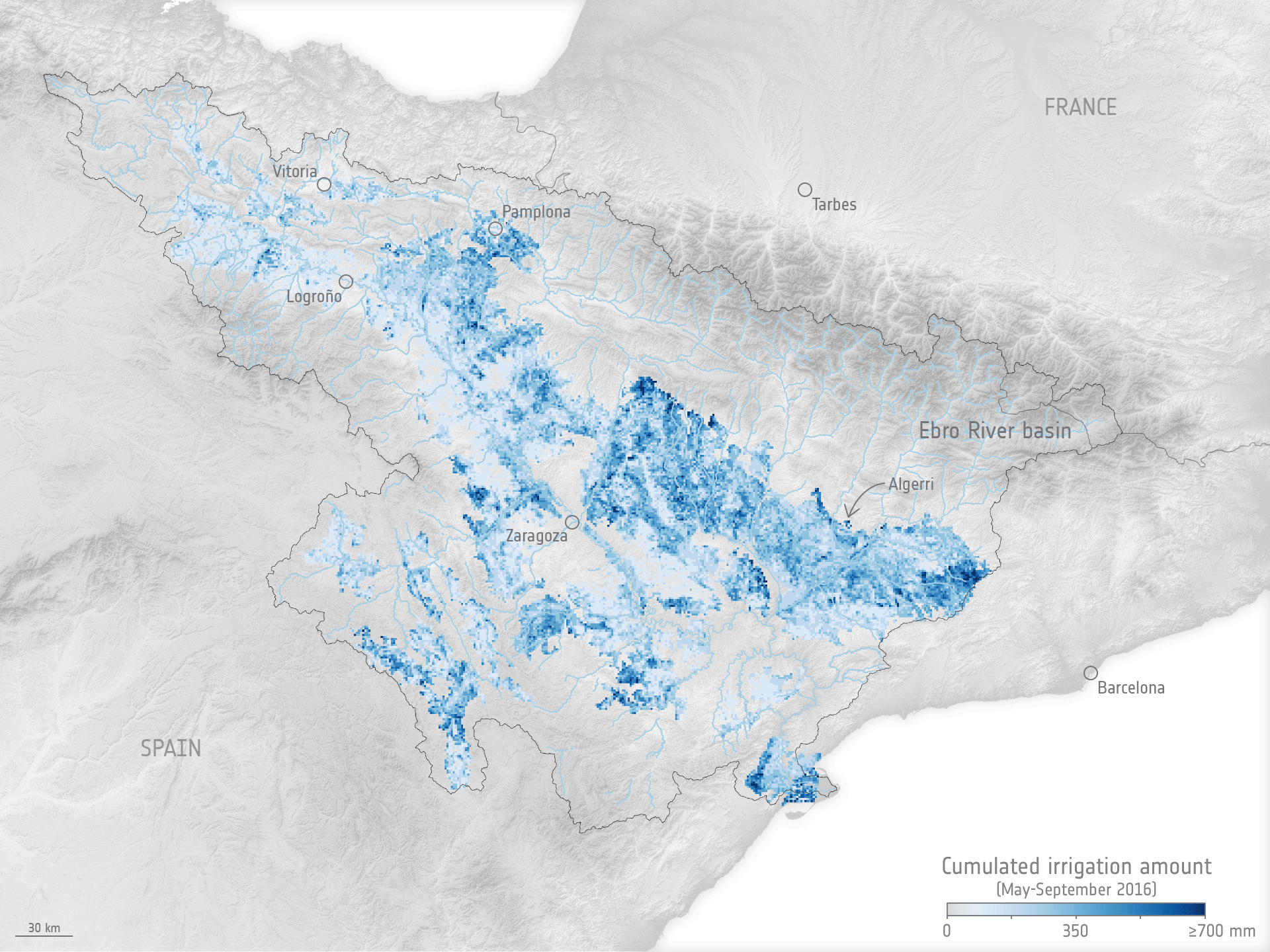
While we know that we use more water for irrigation than for any other single purpose, watering practices are not monitored worldwide. Water needed for agriculture is expected to further increase as time goes on, so managing this precious resource as effectively as possible is imperative. Scientists have now shown that a nifty way of using information from satellites could pave to way to measuring how much water we use to irrigate, which could subsequently lead to better management.
How much water do we use for irrigation?
19.4.2023 16:04
While we know that we use more water for irrigation than for any other single purpose, watering practices are not monitored worldwide. Water needed for agriculture is expected to further increase as time goes on, so managing this precious resource as effectively as possible is imperative. Scientists have now shown that a nifty way of using information from satellites could pave the way to measuring how much water we use to irrigate, which could subsequently lead to better management.
10 remarkable Earth facts
18.4.2023 15:25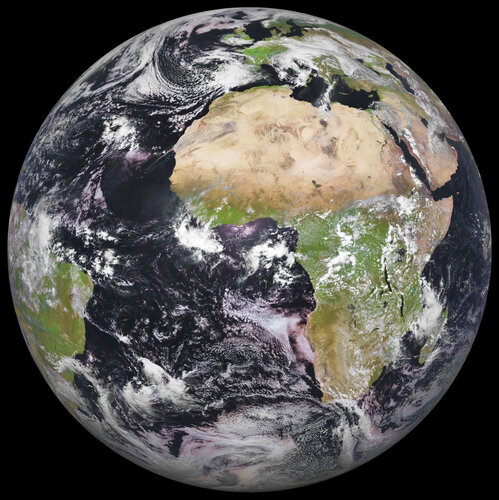
Every year on 22 April, we’ve celebrated Earth Day and the beautiful planet we call home. Earth Day, established in 1970, has been used to highlight our planet’s environmental challenges and raise awareness of the importance of protecting our world for future generations. But shouldn’t every day be Earth Day? We only have one beautiful planet after all. We hope you enjoy this curated list of 10 of the most remarkable facts about Earth.
Scroll to the end of the article to take part in ESA's Earth Day 2023 campaign.
10 remarkable Earth facts
18.4.2023 15:25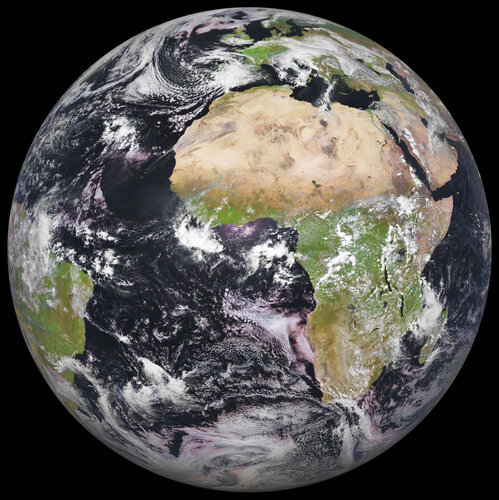
Every year on 22 April, we’ve celebrated Earth Day and the beautiful planet we call home. Earth Day, established in 1970, has been used to highlight our planet’s environmental challenges and raise awareness of the importance of protecting our world for future generations. But shouldn’t every day be Earth Day? We only have one beautiful planet after all. We hope you enjoy this curated list of 10 of the most remarkable facts about Earth.
Scroll to the end of the article to take part in ESA's Earth Day 2023 campaign.
10 remarkable Earth facts
18.4.2023 15:25
Every year on 22 April, we’ve celebrated Earth Day and the beautiful planet we call home. Earth Day, established in 1970, has been used to highlight our planet’s environmental challenges and raise awareness of the importance of protecting our world for future generations. But shouldn’t every day be Earth Day? We only have one beautiful planet after all. We hope you enjoy this curated list of 10 of the most remarkable facts about Earth.
Scroll to the end of the article to take part in ESA's 'You like, we plant' campaign.
Trailblazing Aeolus mission winding down
18.4.2023 13:10
On 30 April 2023, all nominal operations of Aeolus, the first mission to observe Earth’s wind profiles on a global scale, will conclude in preparation for a series of end of life activities.
Trailblazing Aeolus mission winding down
18.4.2023 13:10
On 30 April 2023, all nominal operations of Aeolus, the first mission to observe Earth’s wind profiles on a global scale, will conclude in preparation for a series of end-of-life activities.
13 volcanoes seen from space
10.4.2023 10:00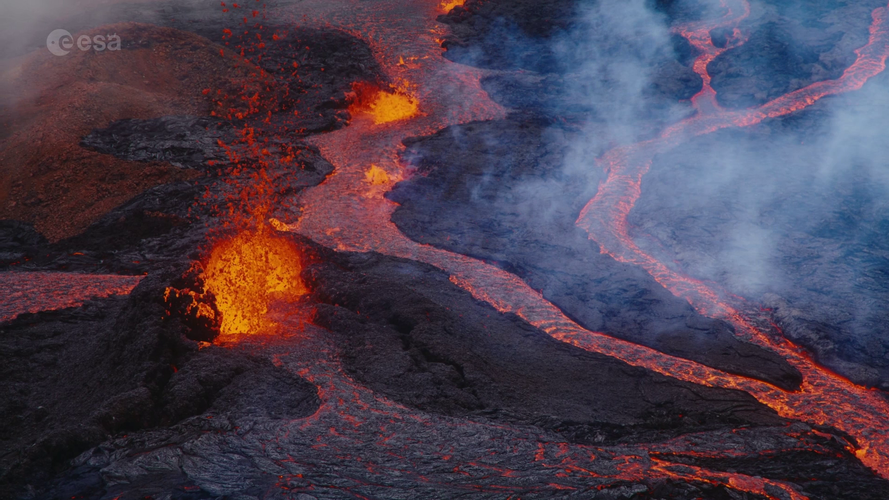 Video:
00:12:09
Video:
00:12:09
Have you ever wondered what a volcano looks like from space? Today, we’re counting down our picks of the most impressive volcanoes around the world – captured by satellites. Our countdown includes Mount Fuji, Mount Mayon and Mount Vesuvius. Satellites orbiting 800 km above us can monitor volcanoes. They can provide real-time data on volcanic activity and can even help disaster response efforts post-eruption.
Smelly seaweed bloom heads to Florida
7.4.2023 14:30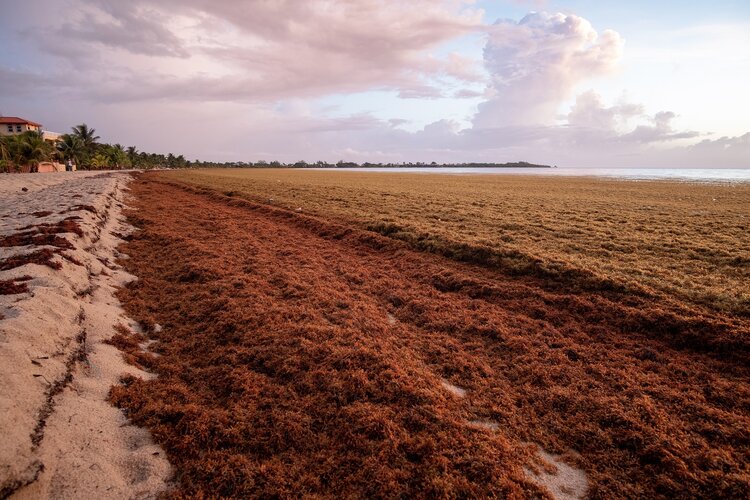
A large mass of Sargassum ‘seaweed’ circling around the Gulf of Mexico may soon wash up along the US west coast near Florida – depending on the right combination of currents and wind. The bloom, which may likely be the largest ever recorded, is so large that it’s visible from space.
Earth from Space: Seoul, South Korea
7.4.2023 10:00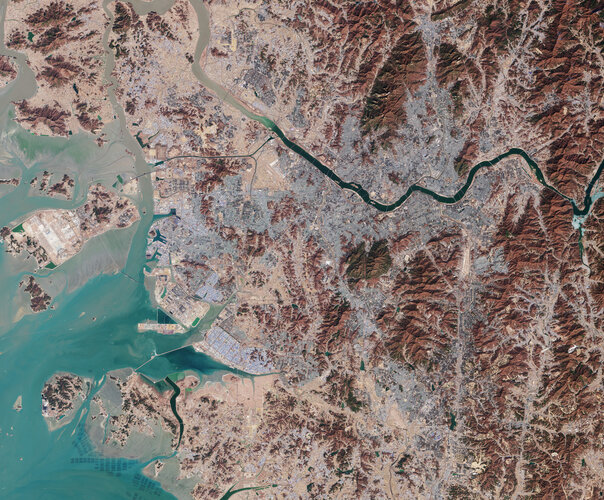 Image:
South Korea’s capital city, Seoul, and surroundings are featured in this image, captured by the Copernicus Sentinel-2 mission on 21 February 2023.
Image:
South Korea’s capital city, Seoul, and surroundings are featured in this image, captured by the Copernicus Sentinel-2 mission on 21 February 2023.
Revealing invisible Himalaya glacier loss
7.4.2023 9:00
New research reveals that ice being lost from glaciers that flow into lakes in the Himalayas has been significantly underestimated. This discovery has critical implications for predicting the demise of the region’s glaciers and for managing critical water resources.
Untangling the ocean biological carbon pump
6.4.2023 15:38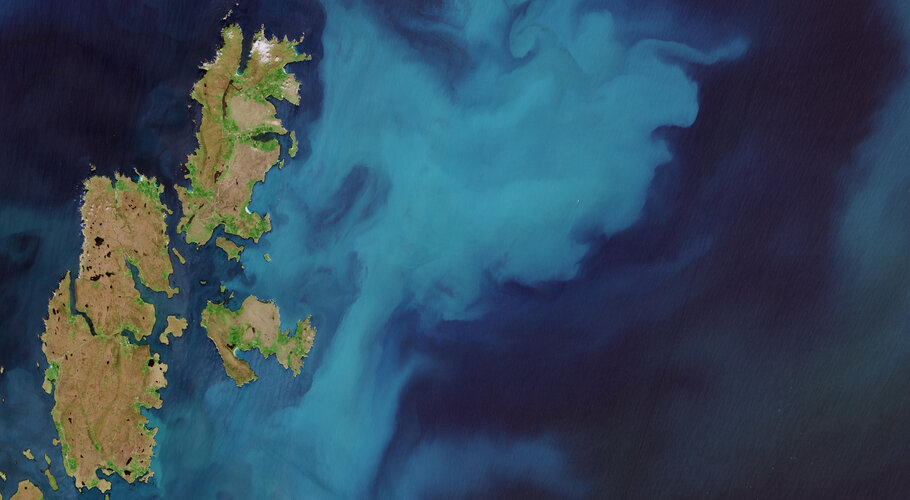
They may be microscopic, but their ability to sequester carbon is phenomenal. We are talking phytoplankton – and scientists working on a project funded by ESA are assessing different aspects of the role that these tiny plants play in the ocean carbon cycle to better understand climate processes.
EO Science Strategy workshop
4.4.2023 11:00
EO Science Strategy workshop
19-20 June – Bruges, Belgium
EO Science Strategy workshop
4.4.2023 11:00
Register for the EO Science Strategy workshop
19-20 June – Bruges, Belgium
EO Science Strategy workshop
4.4.2023 11:00
Register for Earth Observation Science Strategy workshop
19-20 June – Bruges, Belgium
Runoff: not as you might think
3.4.2023 14:38
Runoff and river discharge are important components in Earth’s water cycle, but as climate change tightens its grip, heatwaves and instances of drought are increasingly hitting the headlines. One would assume that this hotter weather leads to reduced water runoff, but an innovative way of using information from satellites suggests that this isn’t always the case.
Is Europe already drying up?
31.3.2023 10:55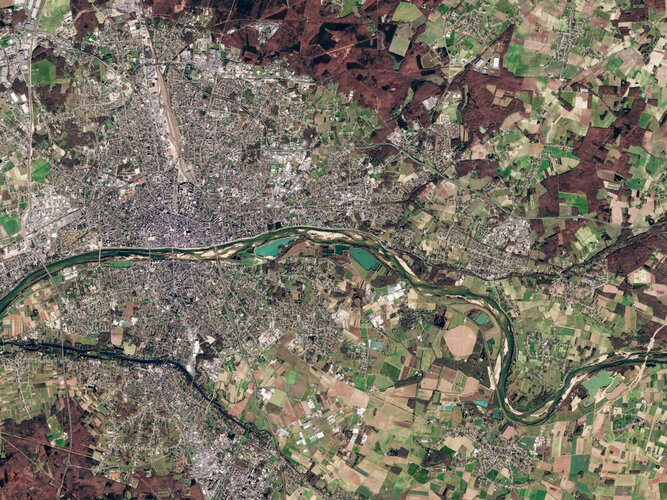
Europe has just endured its second warmest winter on record. Much of southern and western Europe has been affected by substantial anomalies of soil moisture owing to this exceptionally dry and warm winter. Data from ESA’s Soil Moisture and Ocean Salinity mission have been used to monitor the low levels of soil moisture across Europe.
Earth from Space: Pollino National Park, Italy
31.3.2023 10:00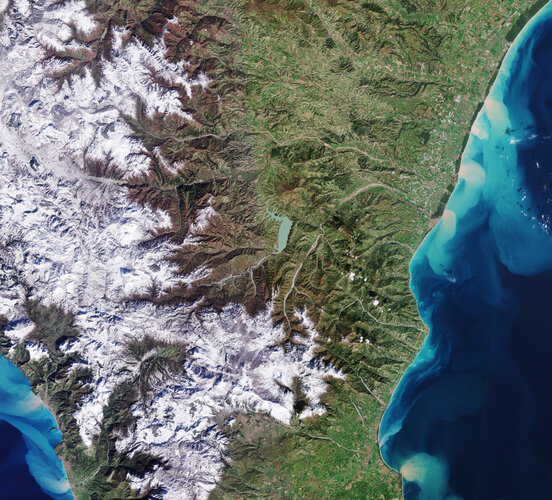 Image:
Part of southern Italy is featured in this wintery image, captured by the Copernicus Sentinel-2 mission.
Image:
Part of southern Italy is featured in this wintery image, captured by the Copernicus Sentinel-2 mission.
ESA–EGU 2023 Excellence Award winners
28.3.2023 15:12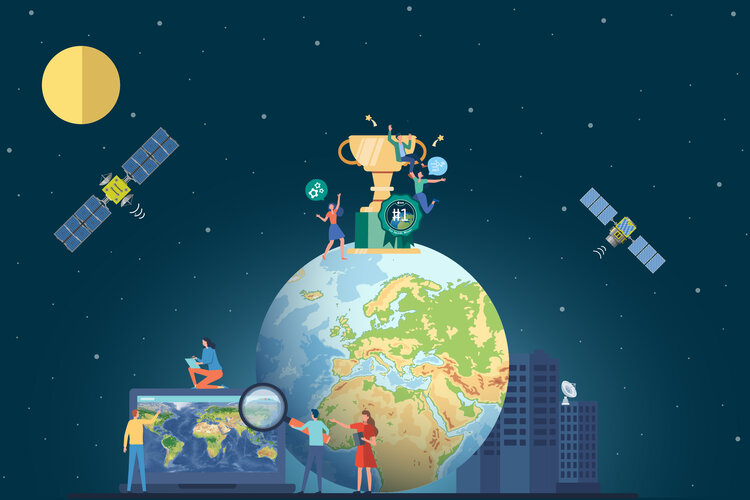
Honouring individual scientists and teams of scientists that have contributed to the innovative use of Earth observation data, ESA and the European Geosciences Union (EGU) are happy to announce the winners of this year’s prestigious Excellence Award.
Earth from Space: Monterrey, Mexico
24.3.2023 10:00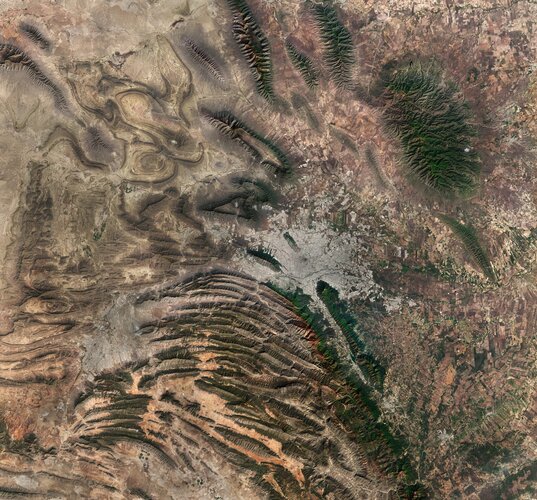 Image:
This Copernicus Sentinel-2 image features the diverse landscape surrounding Monterrey, the capital of the northeast state of Nuevo León, Mexico.
Image:
This Copernicus Sentinel-2 image features the diverse landscape surrounding Monterrey, the capital of the northeast state of Nuevo León, Mexico.
Earth observation supports latest UN climate report
20.3.2023 16:30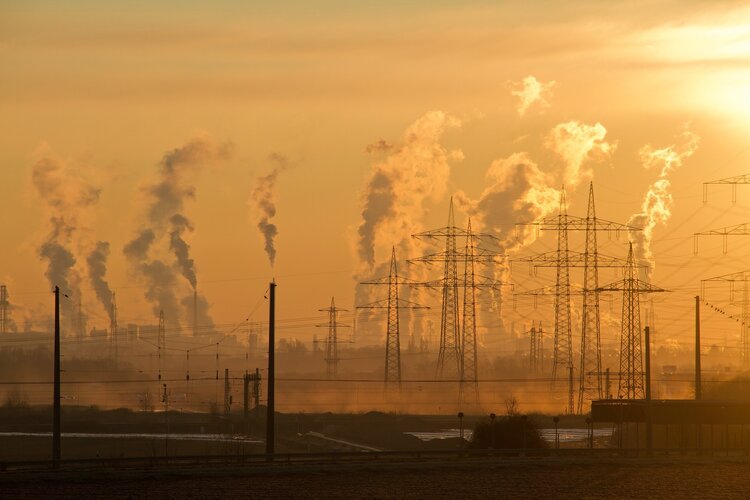
The final instalment of the sixth assessment report by the United Nations' Intergovernmental Panel on Climate Change (IPCC) has been released today. The report warns that the planet has already warmed 1.1°C above pre-industrial levels, resulting in more frequent and intense extreme weather events that are causing increasingly dangerous impacts on nature and people in every region of the world.
The report includes a greater contribution of Earth observation data than its previous iterations in providing the physical evidence of Earth’s changing climate system – from sea-level rise, growing greenhouse-gas emissions and melting sea ice.
Earth from Space: Okavango Delta, Botswana
17.3.2023 10:00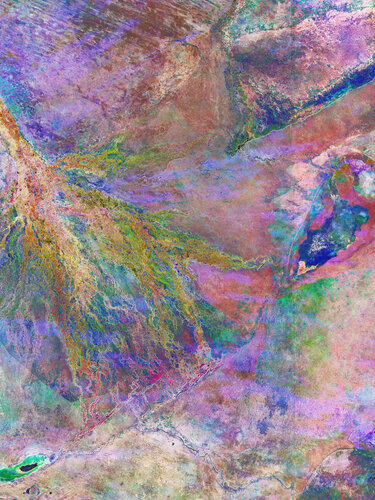 Image:
Botswana’s Okavango Delta – the world’s largest inland delta – is featured in this multitemporal radar image, captured by the Copernicus Sentinel-1 mission.
Image:
Botswana’s Okavango Delta – the world’s largest inland delta – is featured in this multitemporal radar image, captured by the Copernicus Sentinel-1 mission.











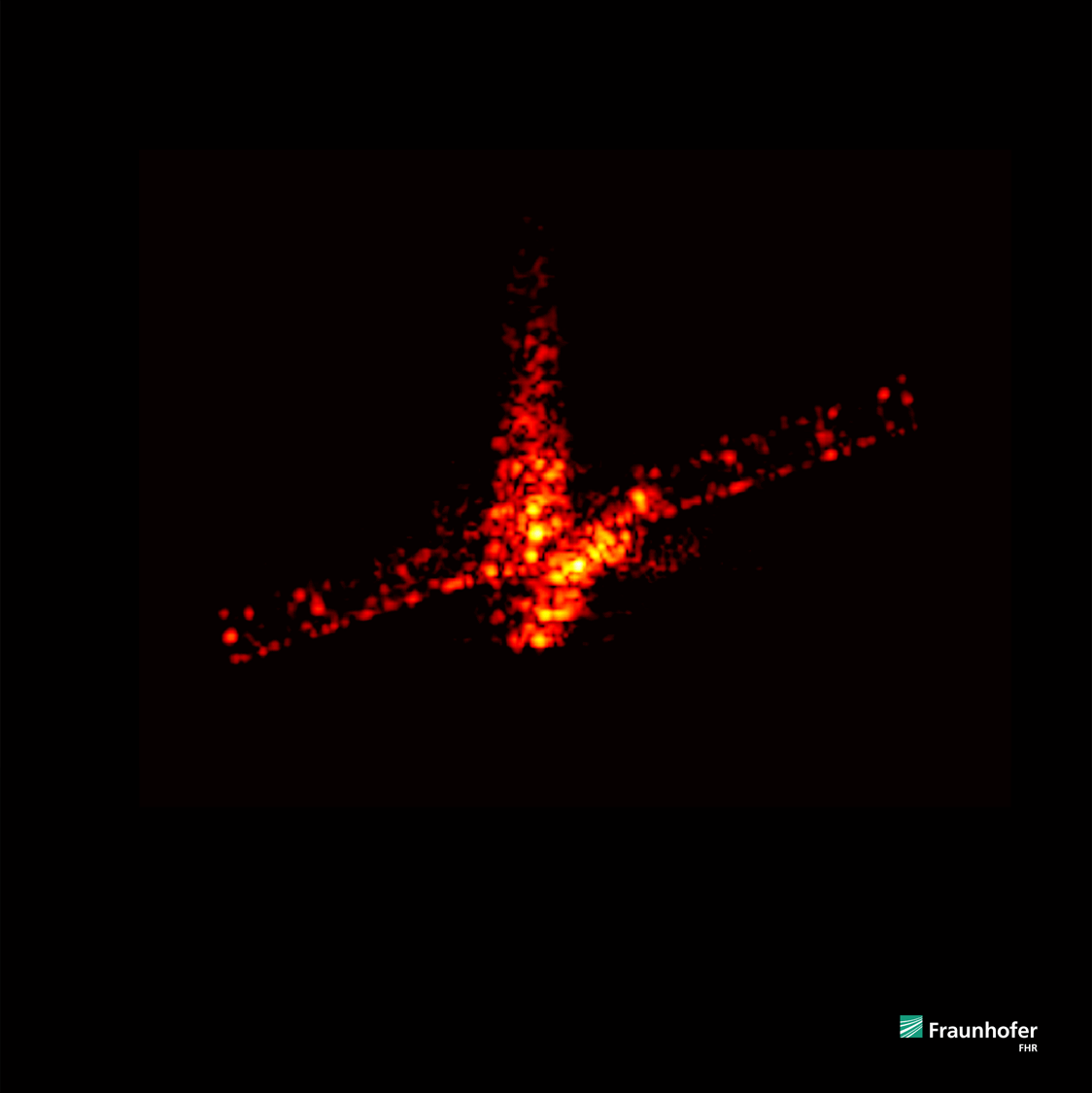
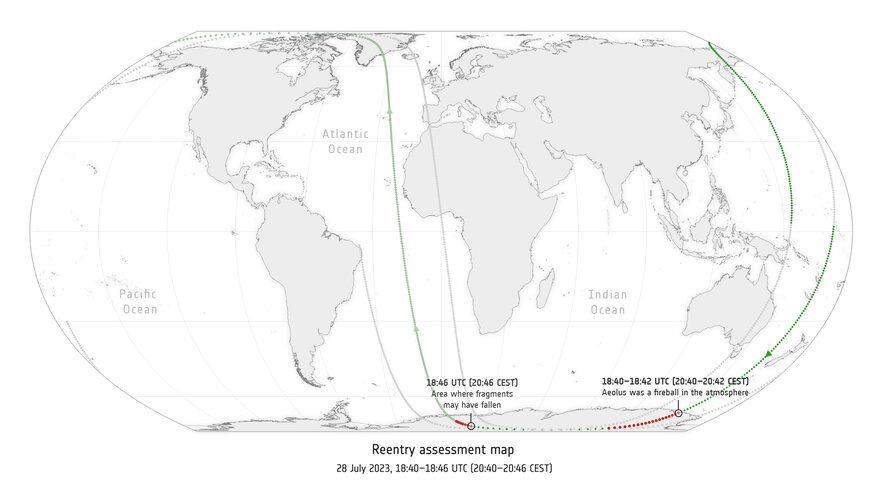 Image:
Right on track: Aeolus reentry map
Image:
Right on track: Aeolus reentry map
 Image:
Right on track: Aeolus reentry map
Image:
Right on track: Aeolus reentry map
